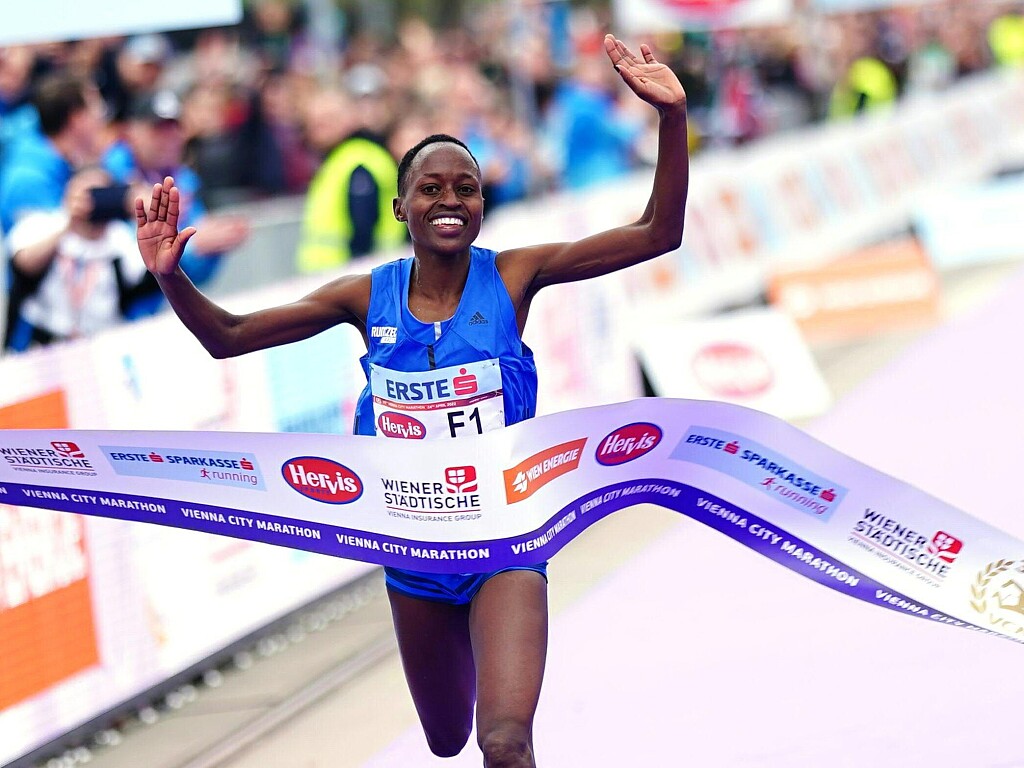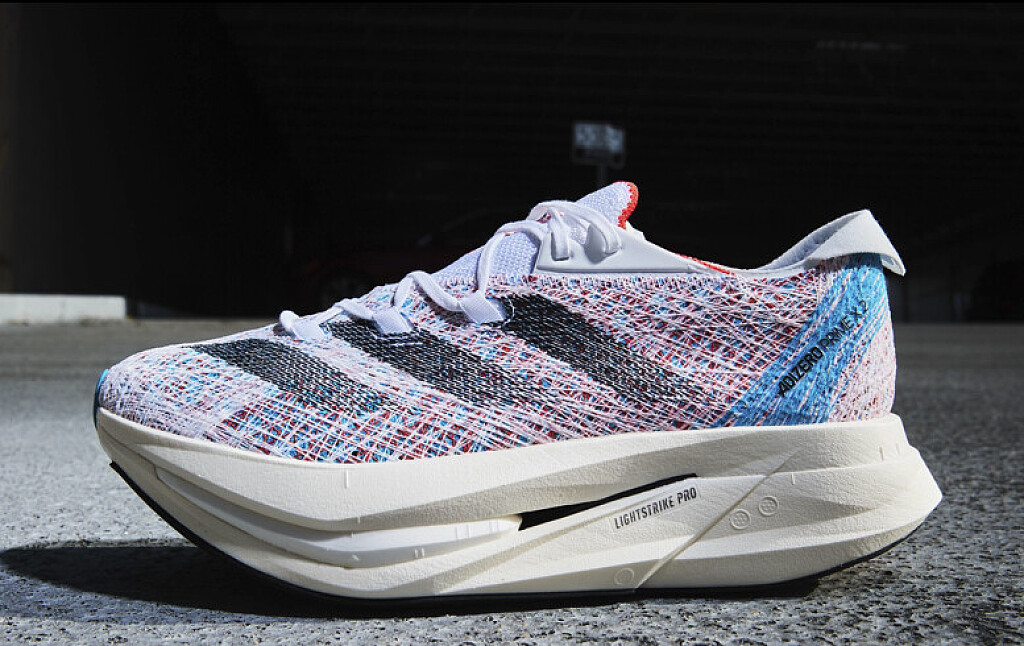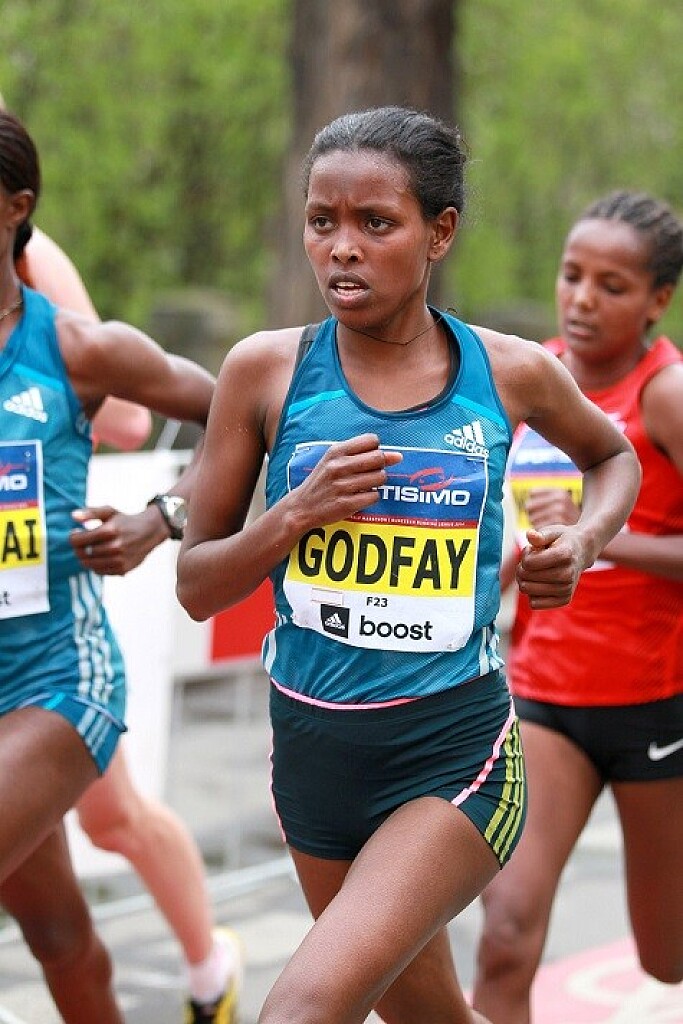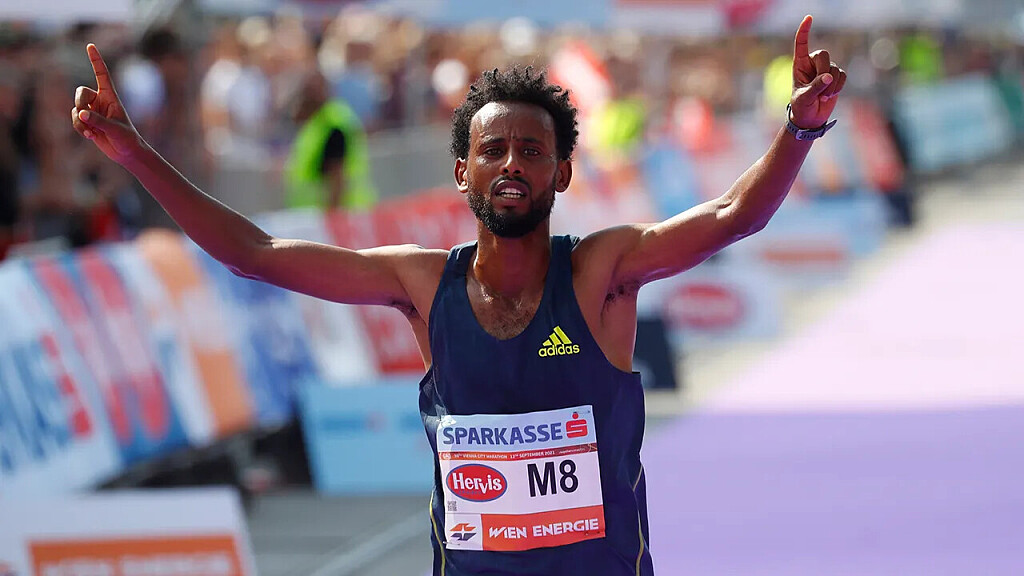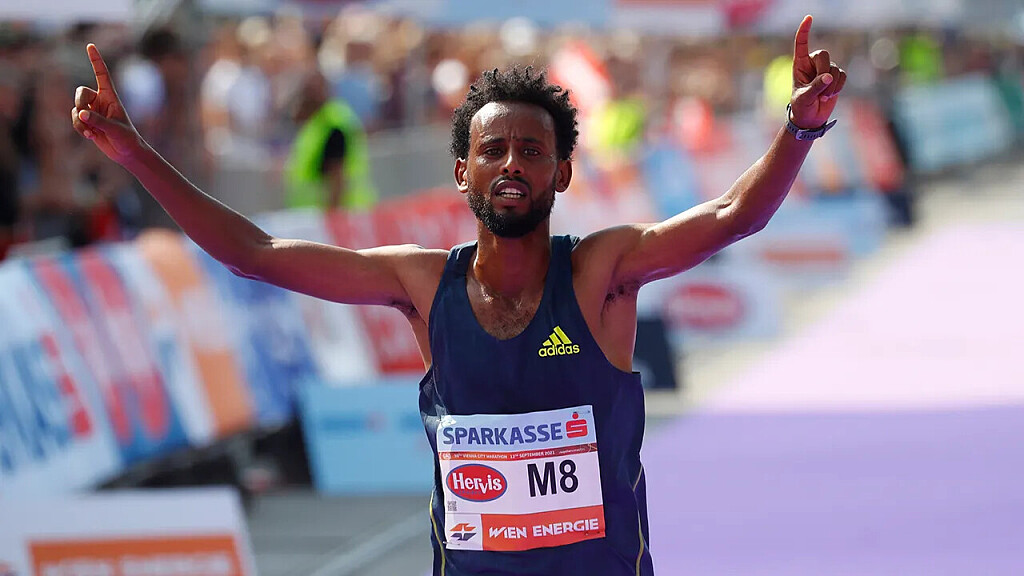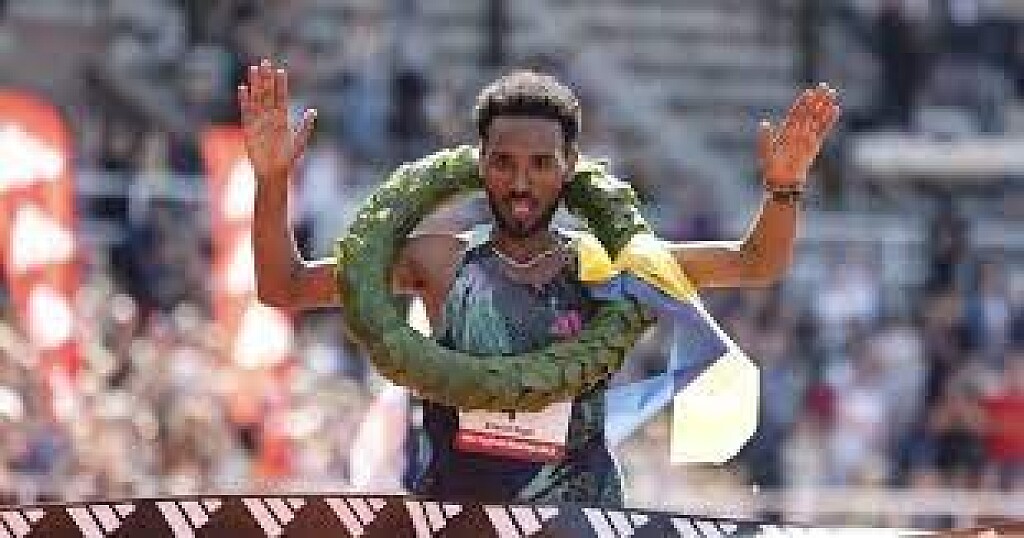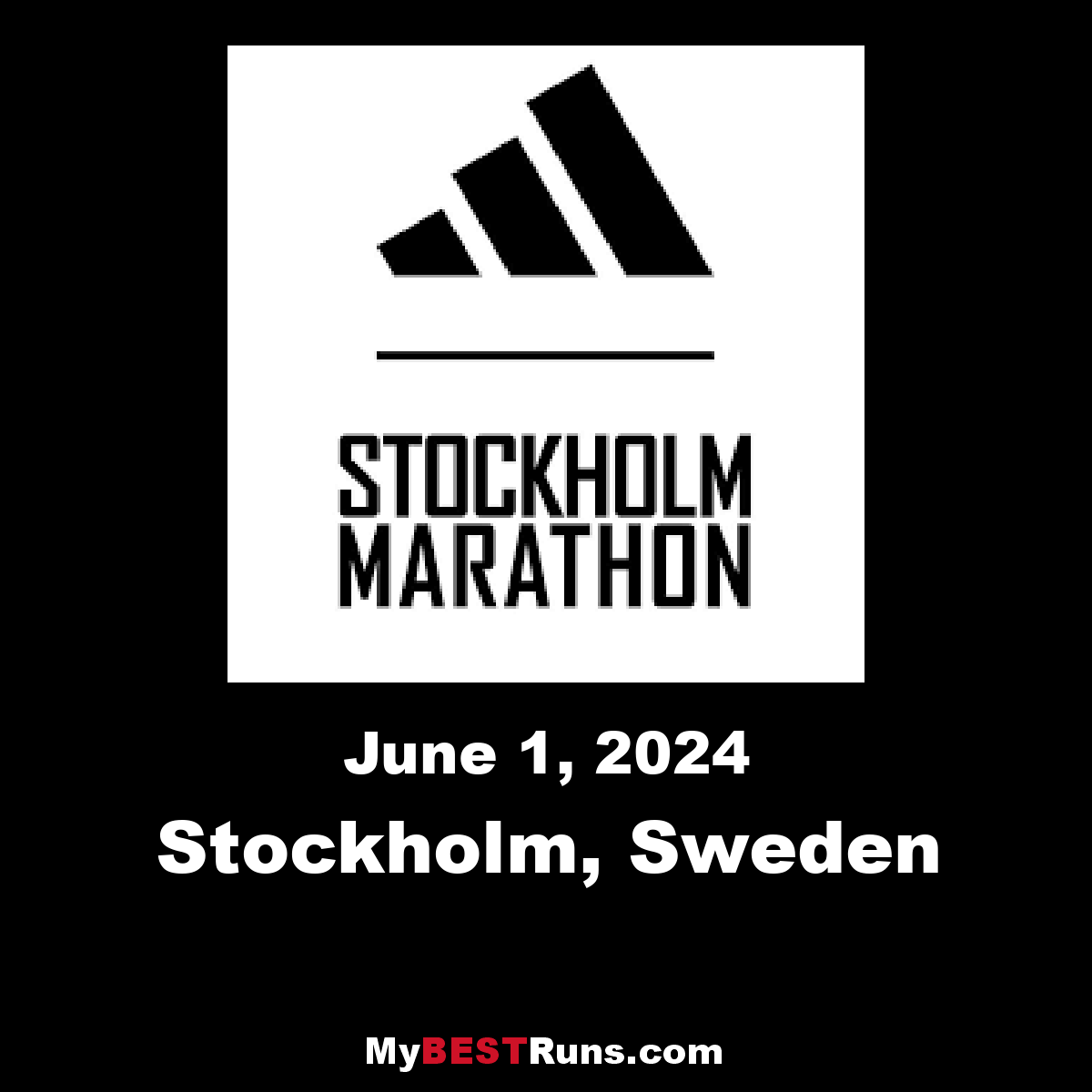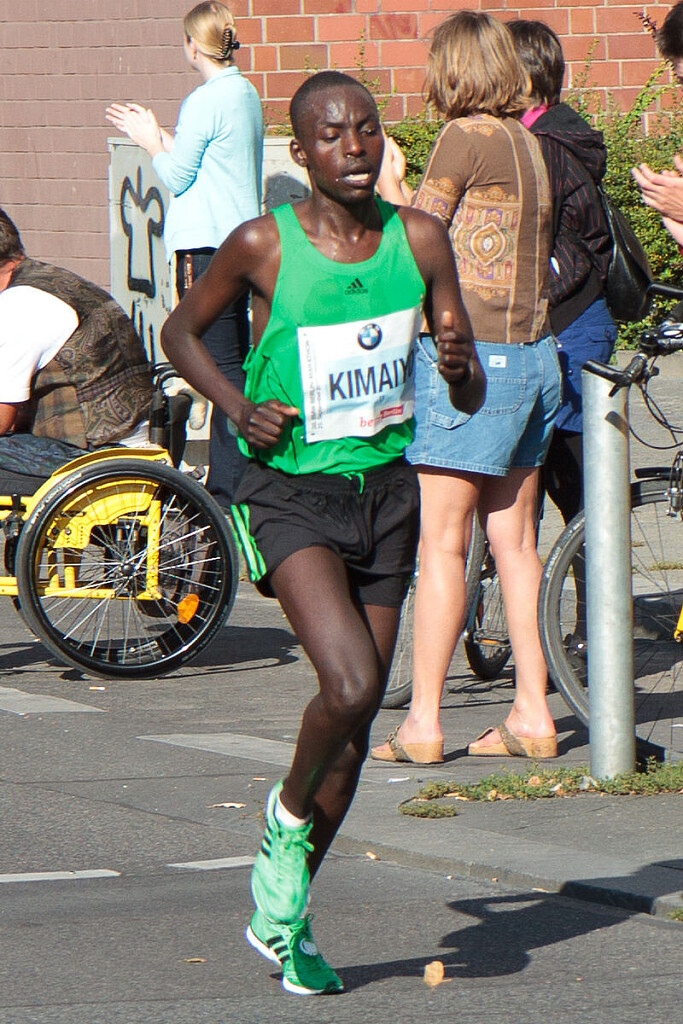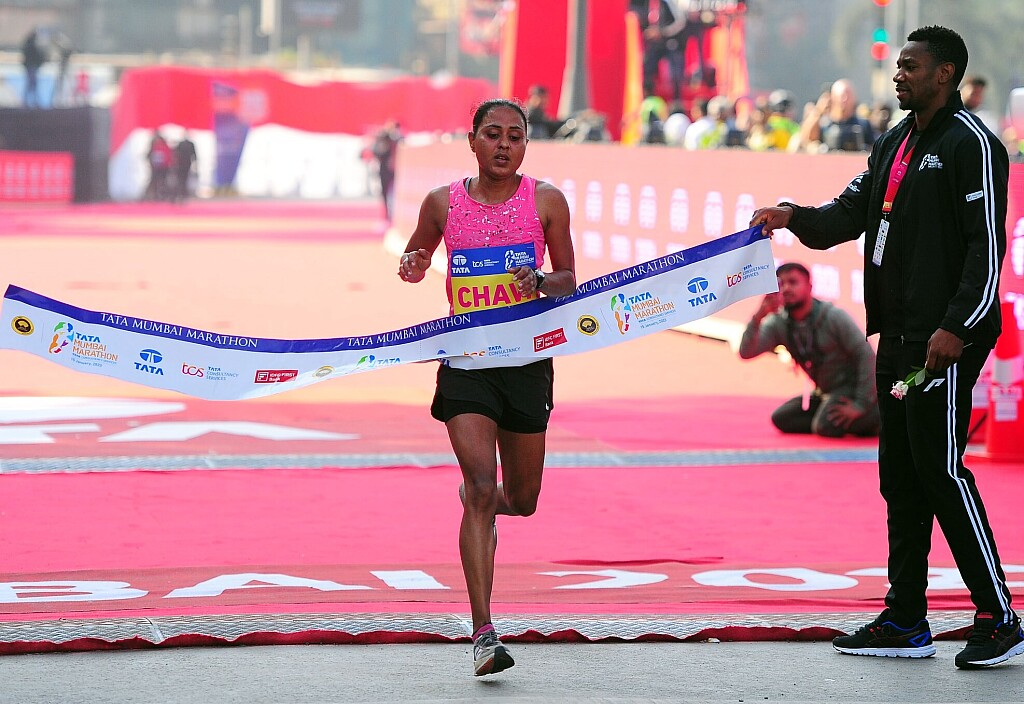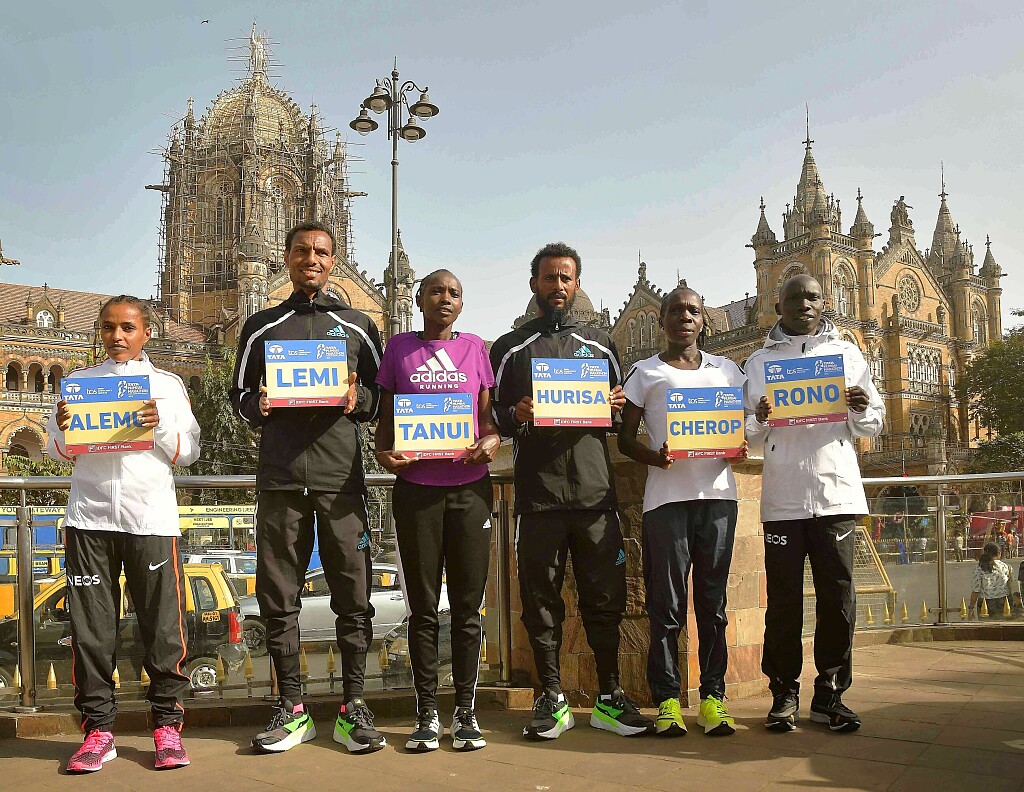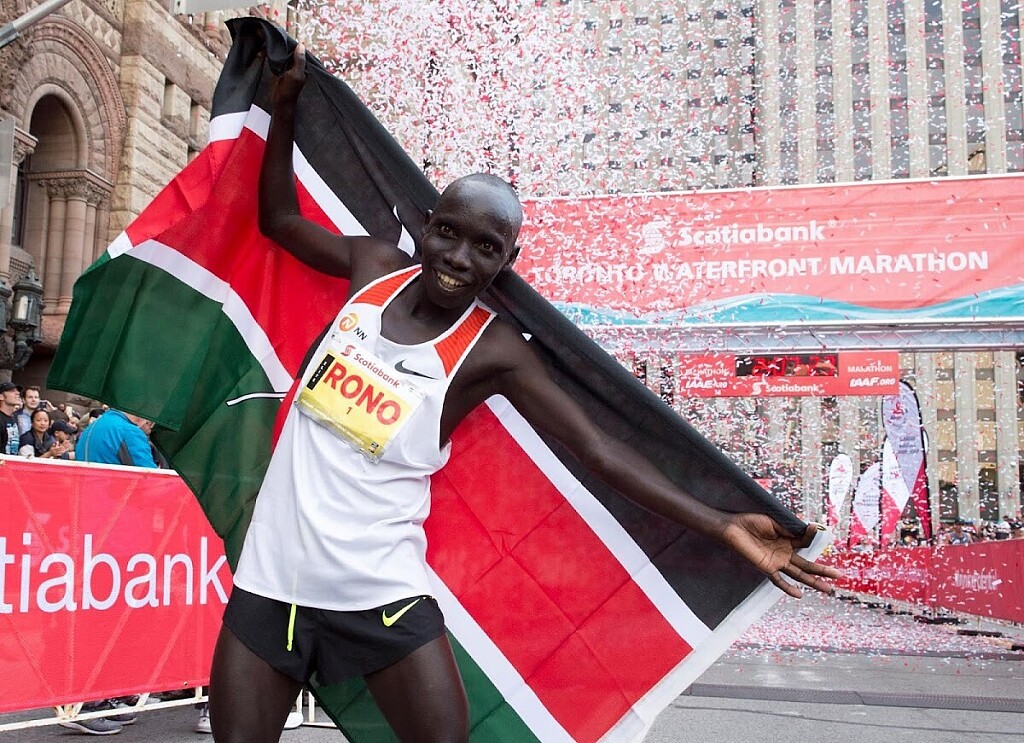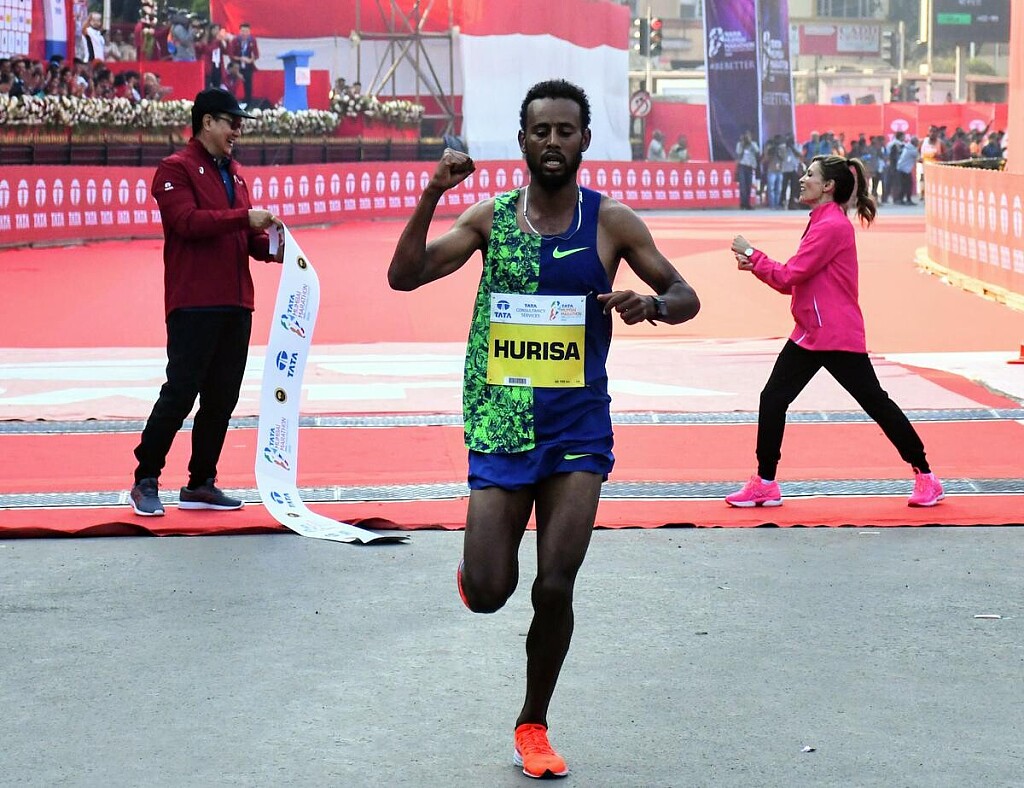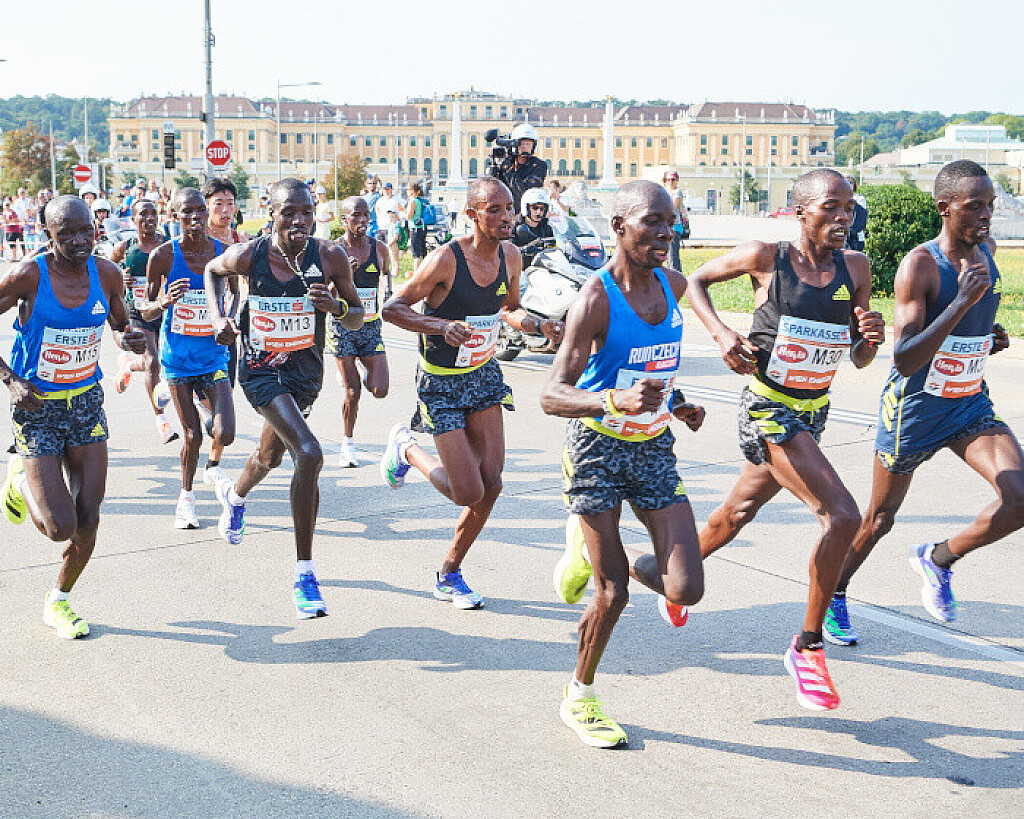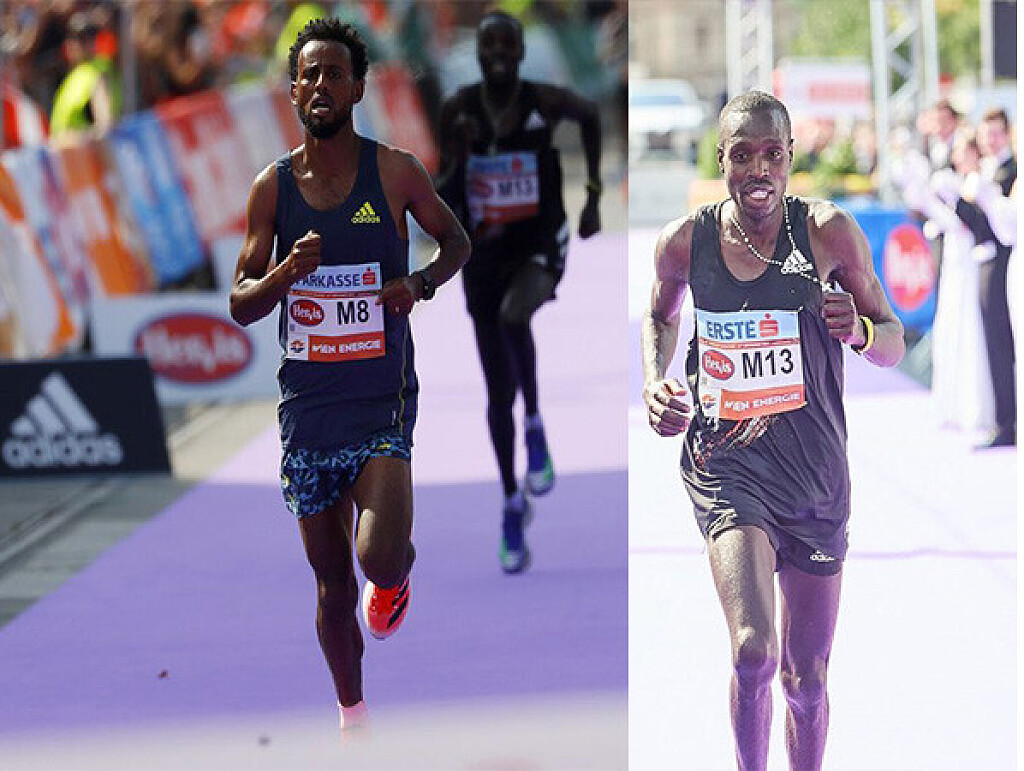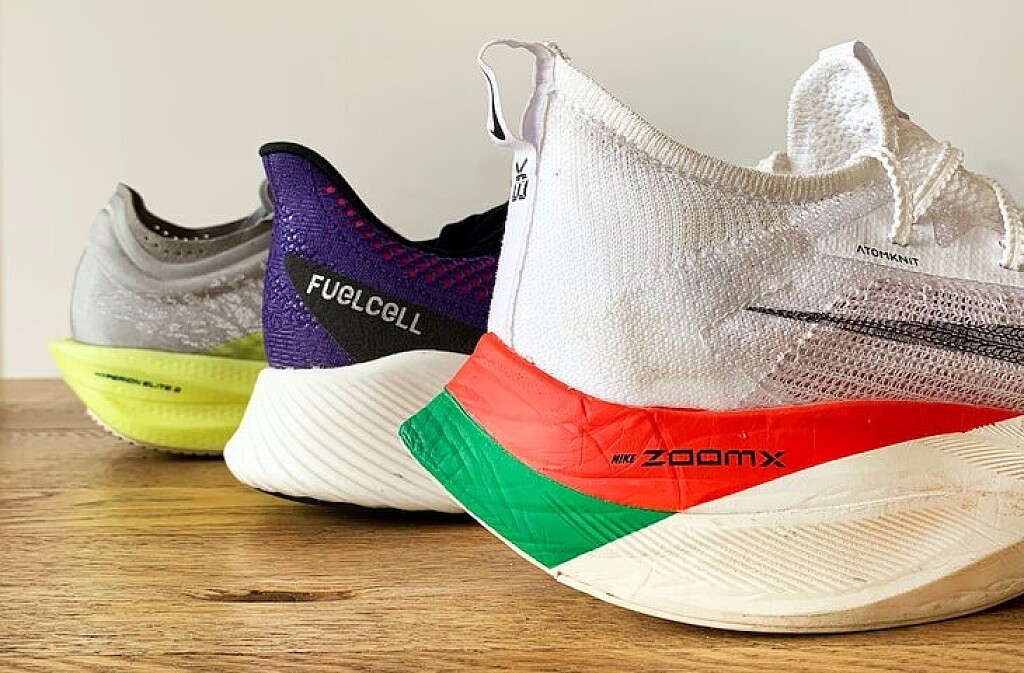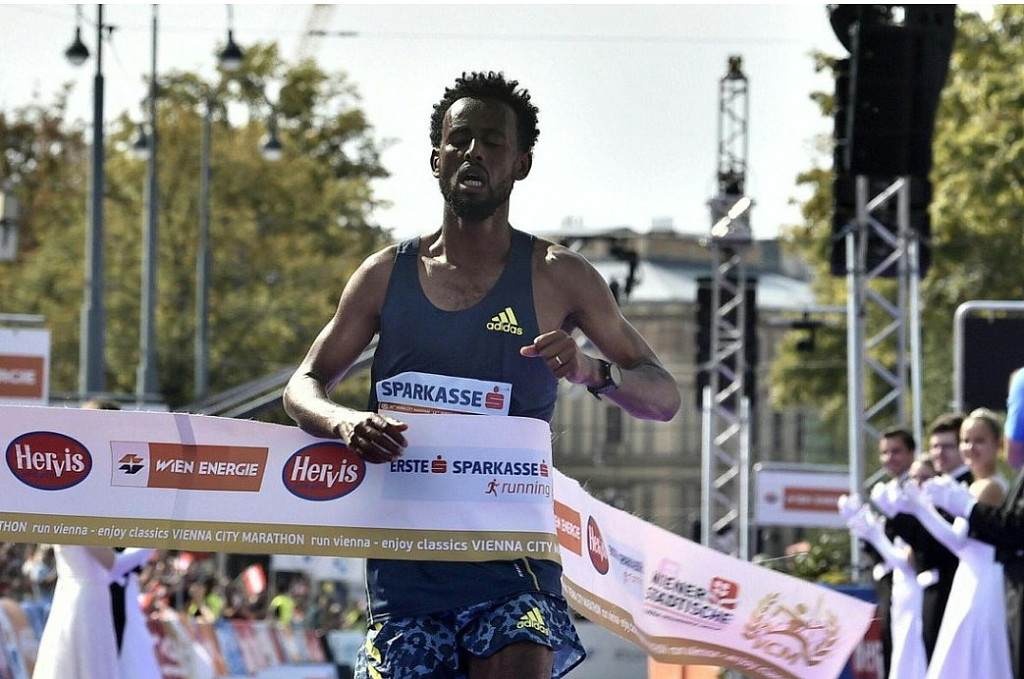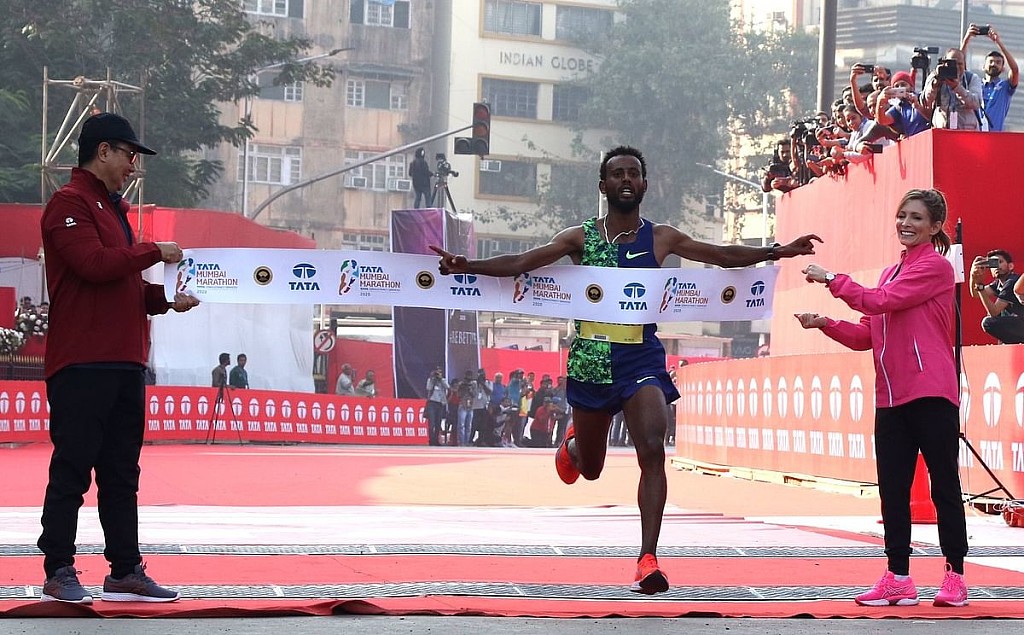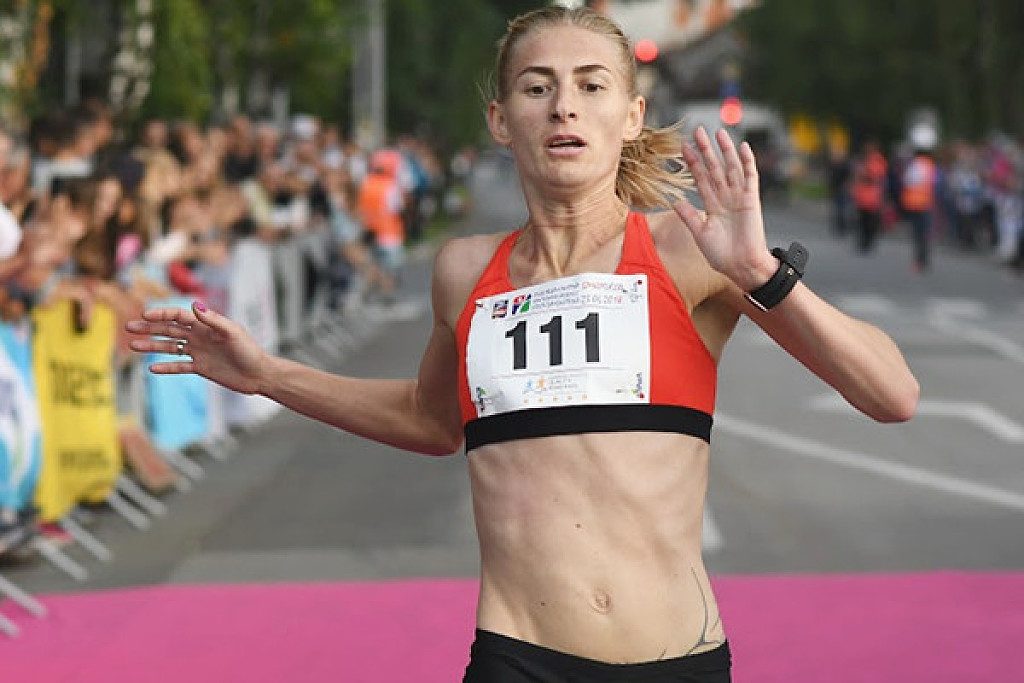Running News Daily
Running News Daily is edited by Bob Anderson. Send your news items to bob@mybestruns.com Advertising opportunities available. Train the Kenyan Way at KATA Kenya and Portugal owned and operated by Bob Anderson. Be sure to catch our movie A Long Run the movie KATA Running Camps and KATA Potato Farms - 31 now open in Kenya! https://kata.ke/
Index to Daily Posts · Sign Up For Updates · Run The World Feed
Articles tagged #Derara Hurisa
Today's Running News
Kenyans Leonard Langat and Vibian Chepkirui will return to defend their Vienna Marathon titles
Kenyans Leonard Langat and Vibian Chepkirui will return to defend their Vienna Marathon titles, while there are three men on the start list who have broken 2:06 and five women featuring personal bests of sub 2:25.
With regard to these personal records it will be strongest line-up in the history of the Vienna City Marathon which will see its 39th edition next week. Including races at shorter distances more than 31,000 runners have registered for Austria’s biggest running event, a World Athletics Marathon Label Road Race.
Kifle had a fine year in 2021: He was third in Enschede, 14th in the Olympic marathon in Sapporo and then 6th in Valencia, where he ran his PB. With his personal record the Eritrean is a little faster than Vienna’s course record of 2:05:41 by Ethiopia’s Getu Feluke in 2014.
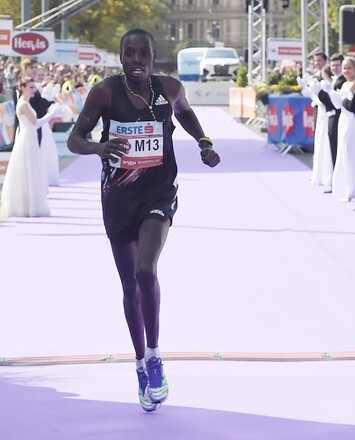
Abdi Fufa of Ethiopia is the third athlete in Vienna’s line-up who has run sub 2:06. A year ago he was second in Siena’s elite only race with 2:05:57.
It looks a tough task for Leonard Langat to defend his title in the Austrian capital. The Kenyan improved to 2:09:25 in Vienna last September. But with this PB he is only the eighth fastest athlete on the start list.

Unfortunately there were a number of cancellations from elite runners recently. Among them are Mekuant Ayenew and fellow-Ethiopian Derara Hurisa, who had originally crossed the line first in last year’s Vienna City Marathon. However he then had to be disqualified for wearing illegal racing shoes and Leonard Langat became the winner.
The fastest runner on the women’s start list is Caroline Kilel, who ran 2:22:34 when she took the Frankfurt Marathon back in 2013. While the Kenyan did not reach these sort of times recently there are other athletes who showed promising last year.
Defending champion Vibian Chepkirui may only be number five on the list with her PB of 2:24:29. However she did run this time last September in Vienna in very warm conditions.
Afterwards the Kenyan said that she could have been at least two minutes faster in more suitable conditions. Chepkirui could be capable of attacking the course record of fellow-Kenyan Nancy Kiprop who was the winner in 2019 with 2:22:12.
Kenya’s Ruth Chebitok and Ethiopia’s Sifan Melaku are number two and three on Vienna’s start list with PBs of 2:23:29 and 2:23:49 respectively.
Sheila Jerotich of Kenya is a contender for victory as well. She took the Istanbul Marathon in November, improving to 2:24:15.
“We are very happy that we were able to surpass the mark of 30,000 entries. Compared to our comeback race in September 2021 this is a nice step forward. We feel the enthusiasm of the runners,“ said Kathrin Widu, the General Manager of the Vienna City Marathon.
There has never been an Eritrean winner in the history of the Vienna City Marathon which had its first edition back in 1984. This may change next week though since the two fastest entrants are from this country: Goitom Kifle and Oqbe Kibrom feature personal bests of 2:05:28 and 2:05:53 respectively.
by ATAF
Login to leave a comment
Vienna City Marathon
More than 41,000 runners from over 110 nations take part in the Vienna City Marathon, cheered on by hundreds of thousands of spectators. From the start at UN City to the magnificent finish on the Heldenplatz, the excitement will never miss a beat. In recent years the Vienna City Marathon has succeeded in creating a unique position as a marathon...
more...Rise of the “Illegal” Running Shoes
Super trainers are fast, fun, and maybe a little risky. Here’s what to know about these max-cushioned shoes.
Banned shoes emerged courtside long before they found their way onto a marathon course. Legend has it that nearly 40 years ago, Michael Jordan laced up a pair of red-and-black high-tops in violation of the NBA’s approved uniform colors.
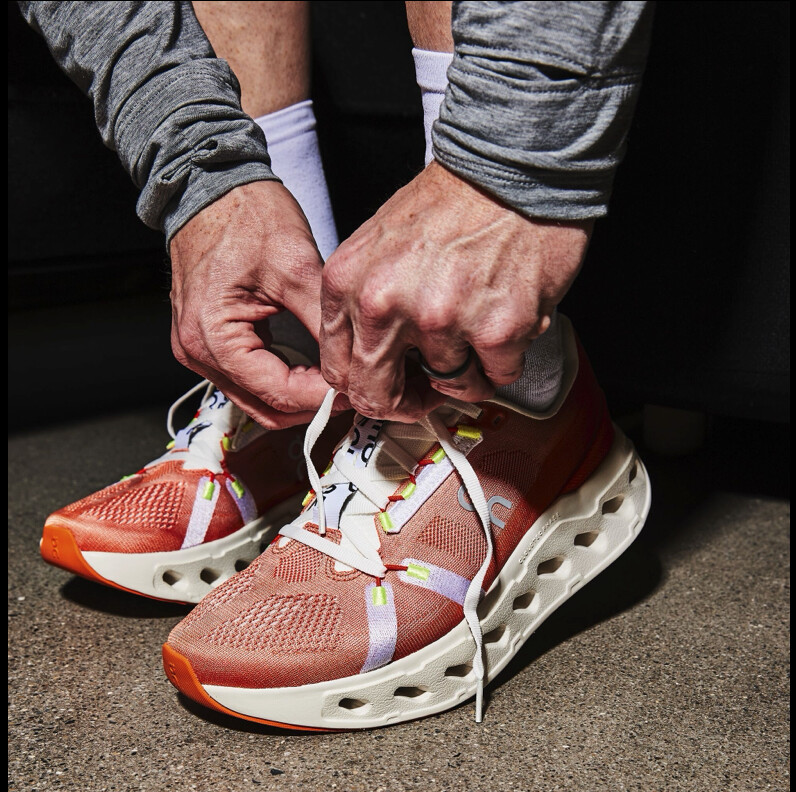
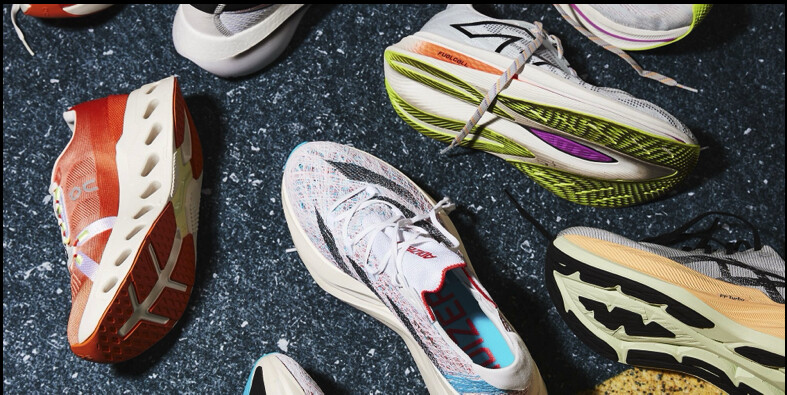
In 2010, the league cracked down again—this time, for reasons besides aesthetics—on a pair of basketball shoes that were shown to increase a player’s vertical-jump height. Today, Nike’s Air Jordan brand is a household name and multibillion-dollar business, and shoemaker Athletic Propulsion Labs (APL) has since released additional banned styles (Superfuture and Concept X) of its performance-boosting kicks.
Though some speculate these bans were mostly crafty marketing, the same can’t be said about the wave of “illegal” shoes that is flooding the roadways on the feet of runners. Super shoes have proven a true performance boon to both elites and recreational runners on race day. Now the tech has trickled down to shoes for daily runs, ushering in super-thick, though still permissible, shoes that have created their own category: super trainers.
What Is a Super Trainer?
Technically, a formal definition doesn’t exist. But we’ll establish some general parameters.
Super trainers share many of the same qualities as super shoes built for race day: a tall stack height, efficient midsole geometry, high-powered super foam, and usually some sort of plate. But these trainers aren’t meant for racing, like a Nike Vaporfly or Saucony Endorphin Elite—they’re designed for everyday mileage.
Super shoes for racing have to balance cushioning and propulsion, but still be lightweight. Super trainers, though, can have beefier constructions that help to extend their life spans. For example, shoe brand On guarantees only four marathons from the Cloudboom Echo 3—that’s little more than 100 miles. Super trainers can handle more mileage, and should have the typical 300- to 500-mile range of a normal running shoe.
To do that, they may have more outsole rubber for durability. Their uppers are usually softer and thicker than a racing shoe’s, as well, with comfortably cushioned ankle collars and tongues. They tie up with sturdier laces and offer a more forgiving fit overall, closer to what you’d expect from a workhorse daily trainer. And, since super trainers aren’t made to toe a starting line, brands can pile on midsole foam in excess of the 40mm limit imposed by World Athletics.
But they’re more than just extremely cushioned running shoes. Super trainers have additional mechanisms and “super foams” geared toward running efficiency and energy return, explained below.
Anatomy of a Super Trainer
If we break down a super trainer into its key components, we see a recurring theme: a stack of super foam in the ballpark of 40mm (or more), a carefully sculpted midsole shape for propulsion, and a plate that harnesses those pieces and holds it all together. This is the tech that puts the “super” in super trainers; it needs to interact with the foot and the rest of the kinetic chain in specific ways to deliver the intended ride and energy return.
Here’s what’s happening inside the midsole under your foot, and how these elements work to boost your stride.
1. Rocker Geometry
When we talk about a rocker sole, we’re describing the curvature of the bottom of the shoe’s sole. Both the heel and the toe curve upward, away from the ground, to give the shoe a more rounded base. The result is a shape like that you’ll find on a rocking chair. This is needed because the shoes are so thick, they don’t bend under the forefoot for a smooth transition during your gait cycle.
Shoe developers can also manipulate the inflection points of the rockers around a runner’s pace and foot strike to potentially manipulate transition time. Usually, you’ll find the most aggressive rocker designs in racing shoes. Still, pronounced rocker soles on super trainers are essential to make transitions comfortable.
→ How do rocker soles work?
Rocker soles in shoes function to mimic the natural rockers of the foot to make us feel more efficient. The foot has three functional rockers—the heel (first), ankle (second), and forefoot (third)—that we use while walking and running. The heel bevel in a shoe prepares the foot to contact the ground and smooths out the shoe’s ride when you land. Forefoot rockers assist movement during toe-off, which generally means the toes and ankle joint don’t have to work as hard.
For some runners, a stiff rocker sole can decrease demand on the calves by transitioning effort upward to the knee and hips. A runner’s experience will depend on their specific biomechanics, where the rocker is placed, and how their footstrike contacts it.
2. Super Foam
Polyether Block Amide, or PEBA, is a common foam compound for super trainer midsoles. (A popular trade name for the material is Pebax, made by a company called Arkema.) It’s the basis for foams like Nike ZoomX, Saucony Pwrrun PB, Puma Nitrofoam, and Asics FF Blast Turbo. Many of those brands leverage the same foam used in their top-tier racing shoes for their super trainer models.
Right now, PEBA-based foams lead the way for energy return. While current research and our own testing indicates that supercritical EVA and TPU blends are also impressive, PEBA has the edge more often than not. Why? It’s lighter than TPU and far softer and bouncier than supercritical EVA. Some iterations are firmer than others, depending on which brand’s flavor you try.
→ How does foam work?
Cushioning serves to absorb shock upon landing and provide overall comfort while running, but it can also return energy to the runner and stabilize the shoe. PEBA foams are especially lightweight, so brands can pile it on—both in thickness and in width—without the same weight penalty applied when using EVA or TPU materials. The additional width is just as important as the height. These shoes often need a wide platform of midsole material to remain stable.
Every brand’s PEBA-based foam compresses at a different rate, with varying amounts of responsiveness, so each offers a unique benefit based on the runner. For example, runners who land with lots of force can bottom out and crush a foam that’s too squishy, so they may prefer a firmer platform. A harder midsole can offer more support without any additional stability elements. On the other hand, a softer foam can provide more comfort, and research suggests that it may have a protective benefit for lighter runners.
Keep in mind that dozens of pieces within a shoe, as well as countless runner-specific characteristics, come together alongside a super foam to deliver its specific ride and response. It’s not always possible to parse each element individually.
3. Plates
Not every super trainer has a plate in its midsole, but it’s increasingly common. That’s because—regardless of whether it’s made from TPU, EVA, PEBA, carbon fiber, or a mix—a plate stiffens the midsole and can add support. It may also give the ride some extra pop, but it largely functions to stabilize the shoe. The Adidas Adizero Prime X 2 Strung, which has a heel stack height of 50mm, requires two stiff carbon-infused plates.
Some shoes need less support and utilize pliable materials with thinner rod constructions or forgo full-length plates for ones that extend only halfway along the midsole.
→ How do midsole plates work?
While plates can add propulsion, research suggests that the true hero is the foam itself. A plate mostly serves to “facilitate motion and add stiffness to the sole to balance out the softer compliant foams,” says Matt Klein, DPT and founder of the Doctors of Running website and podcast.
He explains that the effects of stiff-plated shoes are not clear-cut. “Everything we know [about super trainers] is applied from super shoe and maximal shoe research. These shoes shift work up to the knees and hips. The ankles may do less, but that doesn’t always apply. If the shoe is too stiff, the ankles will actually end up doing more work. But once a midsole gets so thick, it may not need a plate; the amount of material naturally stiffens the ride.”
What Are the Benefits of Super Trainers?
Simply put, these shoes are so much fun to run in. They can lend a bounce to your stride that feels like bounding on a trampoline. And since the springy sensation and high energy return can help you move more efficiently, running fast feels easier.
Plus, a review of 63 research studies concluded that these trainers can also help attenuate shock and dampen some of the hard impacts from training. So, runners recover from hard efforts more quickly; they’ll lace up the next day feeling fresher and less sore than if they’d worn regular running shoes. And for those eager to increase mileage, this may allow some runners to increase their weekly workload with less fatigue and fewer aches and pains.
“These have the benefit of having similarities to super racing shoes. These shoe types certainly increase the capacity of work you can do, so I suspect those running higher miles will probably benefit most from these,” Klein speculates.
But, the recovery boost from super trainers can make it tempting to tack on too many miles too soon or overcook the pace on easy days. “Just because you are less sore does not mean you are at a lower risk for injury. You can still get injured with overdoing things,” Klein says.
Our wear-testers report that they’re able to run faster paces with less effort in super trainers, but it’s still important to keep easy jogs relaxed. Double-check your training log and pull back on the reins if you notice spikes in mileage or intensity outside your typical training volume.
Are There Any Risks to Super Trainers?
Though they feel great, super trainers can have an impact on our natural gaits and biomechanics. “One of the injury risks for this shoe type is that it is so different from normal mechanics and footwear. The current evidence from super shoes and super-max stack-height shoes is that we tend to stiffen our legs in taller, softer shoes,” Klein says. “This is not bad short-term, but some evidence suggests long-term super-max stack-height shoes can actually increase joint loading due to that stiffening.”
“I suspect running in them a ton will cause less joint motion, as the body will stiffen up to find stability as shock absorption isn’t needed. This may be great for a recovery run/faster run, but trying to transition back to normal shoes can take time if you only run in these and super racing shoes.” Klein recommends making the transition slowly to avoid injury and keeping more than one pair of running shoes in your rotation.
“I do suspect that with the workload being shifted up to the knee and especially the hip, there may be an increase in injuries in those areas. The hip still has to work harder being on a softer, less stable surface. So, those with hip instability and strength issues may want to avoid super shoes, at least until these issues have been addressed,” Klein says. New runners should focus on building strength and experience before experimenting with super trainers.
There is little doubt that these shoes have effects at the point where our feet meet the midsoles as well as farther along our kinetic chains. Super trainers shift more of the workload of running to the hamstrings, which means that you won’t engage the calves and lower leg muscles as much. Moving some of that effort to larger muscle groups can be beneficial for some runners, like those who are struggling with calf or Achilles tendon injuries. But those who have a nagging hamstring strain may need to be wary. Whether or not it’s your goal, those upper leg muscles will receive more of a workout.
At the very least, one thing can be said for sure. It’s that all the foam underfoot is going to put a lot of distance between your foot and the ground. This limits the amount of ground feel you receive from the shoe. It can be easier to wipe out if you’re hopping a curb on a night run. And on rain-slicked sidewalks or technical trails, it can be tough to steer a thick and bulky midsole. If you’re prone to ankle rolls or need a keen sense of where and how your foot is landing whenever you touch down, a super trainer might not serve you well.
Will I Really Get DQ’d in a Race?
It depends. If you’re an elite runner, absolutely. But if you’re going for a 3:10 BQ, it’s unlikely. Ethiopian runner Derara Hurisa won the 2021 Vienna Marathon in 2:09:22 but was disqualified when race organizers found he’d raced in the Adidas Adizero Prime X, a different shoe than he’d declared on his prerace form. Another runner at a fall 2023 half marathon was disqualified after winning in the same shoe.
Our Favorite Super Trainers
Running shoes aren’t cheap. Maxed-out midsoles with top-end shoe tech only add to the bill. Most super trainers will cost you $180 at least, and there are options to be had for well over $200.
by Runner’s World
Login to leave a comment
Ethiopian Afera Godfay Confident of Success At TCS Toronto Waterfront Marathon
Afera Godfay won the 2019 Dongying Marathon in China with a superb personal best 2:22:41 then almost completely vanished from the world scene for a few years.
There was a third-place finish in the Xiamen Marathon, also in China, a year later but that performance largely went under the radar.
On October 15th the 31-year-old Ethiopian will target the TCS Toronto Waterfront Marathon with high expectations. Indeed, in April this year she ran 1:10:25 at the Rabat International Half Marathon in Morocco which encouraged her to chase a new marathon personal best in Toronto. This will mark her first ever visit to Canada.
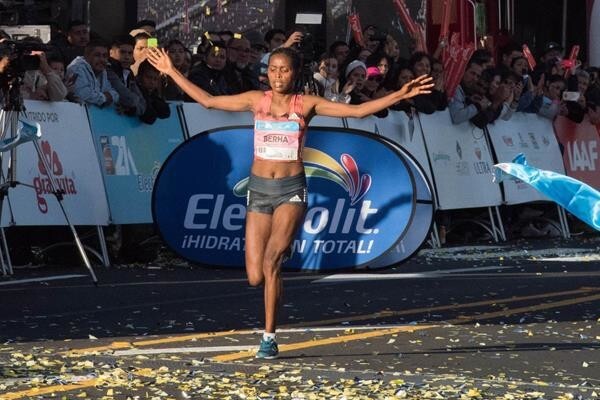
“Training is going great,” she reports. “I do my training six days a week - every day except Sunday. I cover a long distance with speed. Three days a week I run with (coach Gemedu Dedefo’s) group.
“My goal is to win (Toronto Waterfront) with a good time. I hope to run 2:24.”
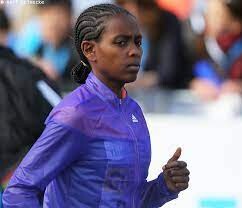
The group is currently celebrating the great success of one of their members, Tigist Assefa, who smashed the world marathon record with her astonishing 2:11:53 in Berlin on Sunday. No doubt the result will provide inspiration to Afera.
The buildup is creating excitement as she is eager to return to her past level. Five times she has run under 1:10 for the half marathon distance over the years and she can now sense she is coming into form. Afera has a good reason for her absence those few years.
“It was because I gave birth to my child,” she explains. “And it was a bit hard to get back to my previous condition. I have one child and her name is Maranata.”
Afera comes from a small town in the war torn northern Ethiopian province of Tigray called Alaje. Although she moved to Addis in 2010 her parents still live in Tigray. She is thankful that they were not affected by the two-year-old war that lasted until November 2022 and which led to widespread famine.
Once a year, when her training program allows, she will visit her parents and friends in Alaje. She comes from a long line of farmers. Growing up under hardship likely fuelled her desire for success in road racing. But she also had mentors.
“My inspiration is Meseret Defar,” she declares. Defar is a two time Olympic 5,000m champion and a national hero in Ethiopia.
As a young athlete Afera had success at shorter distances and represented Ethiopia at the 2010 World Cross Country Championships. She finished a solid 8th in the Under 20 race in Bydgoszcz, Poland helping the Ethiopian team to a silver medal finish behind Kenya.
Two years later she again represented her country at the African Championships over 10,000m. She placed 7th in that meet which was held in Porto Novo, the capital of Benin. Asked why she turned to marathon racing her answer is simple: ““It’s because I have a good endurance and, money-wise, I find it better.”
Although she has not been to Toronto before coach Gemedu Dedefo made the journey a few years ago and will undoubtedly have some excellent insight into how best to race the course. And, travelling with her from Addis will be previously announced Ethiopian stars Derara Hurisa, Adugna Takele, and Yohans Mekasha who will feature strongly in the men’s race while Waganesh Mekasha will battle with Afera for the $20,000 first place prize money.
Once again, the TCS Toronto Waterfront Marathon promises a memorable contest and the Ethiopian flag will surely be waved in celebration at the finish.
About the TCS Toronto Waterfront Marathon
The TCS Toronto Waterfront Marathon is Canada’s premier running event and the grand finale of the Canada Running Series (CRS). Since 2017, the race has served as the Athletics Canada national marathon championship race and has doubled as the Olympic trials. Using innovation and organization as guiding principles, Canada Running Series stages great experiences for runners of all levels, from Canadian Olympians to recreational and charity runners. With a mission of “building community through the sport of running,” CRS is committed to making sport part of sustainable communities and the city-building process.
To learn more about the TCS Toronto Waterfront Marathon, visit TorontoWaterFrontMarathon.com.
by Paul Gains
Login to leave a comment
TCS Toronto Waterfront Marathon
The Scotiabank Toronto Waterfront Marathon, Half-Marathon & 5k Run / Walk is organized by Canada Running Series Inc., organizers of the Canada Running Series, "A selection of Canada's best runs!" Canada Running Series annually organizes eight events in Montreal, Toronto and Vancouver that vary in distance from the 5k to the marathon. The Scotiabank Toronto Waterfront Marathon and Half-Marathon are...
more...Ethiopia’s Derara Hurisa targets victory at TCS Toronto Waterfront Marathon
Derara Hurisa is the latest in a long list of Ethiopian greats to commit to the 2023 TCS Toronto Waterfront Marathon scheduled for October 15th.Once again, the event is a World Athletics Elite Label race. The 26-year-old has had an extraordinary marathon career to date ever since winning his debut at the 2020 Mumbai Marathon. There he ran 2:08:09 which remains his personal bestdespite a few other memorable outings.Two years ago Hurisa won the Guadalajara Marathon at 1,600m altitude in Mexico eight months after achieving notoriety for all the wrong reasons in Vienna.
Hurisa, then still relatively young at 23 years of age, crossed the finish line first at the Vienna Marathon. He clocked a time of 2:09:22 three seconds ahead of Kenya’s Leonard Langat. No sooner had Hurisa crossed the finish then officials approached him and within minutes he was disqualified.
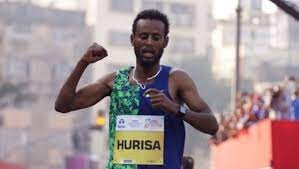
World Athletics has instigated strict rules to limit the thickness of racing shoes. It was found that Hurisa had worn a different pair of shoes to those he submitted in the pre-race inspection. They were one centimeter too thick. It is believed this was the first time a marathoner had been disqualified under these rules.
“My preparation for Vienna marathon was very good,” he says looking back on the incident. “I had to switch my shoes because it was my very first time putting on those shoes. It wasn’t the shoes I wore when I was in training. So I decided to switch and use them without knowing it was different. The color was similar.”
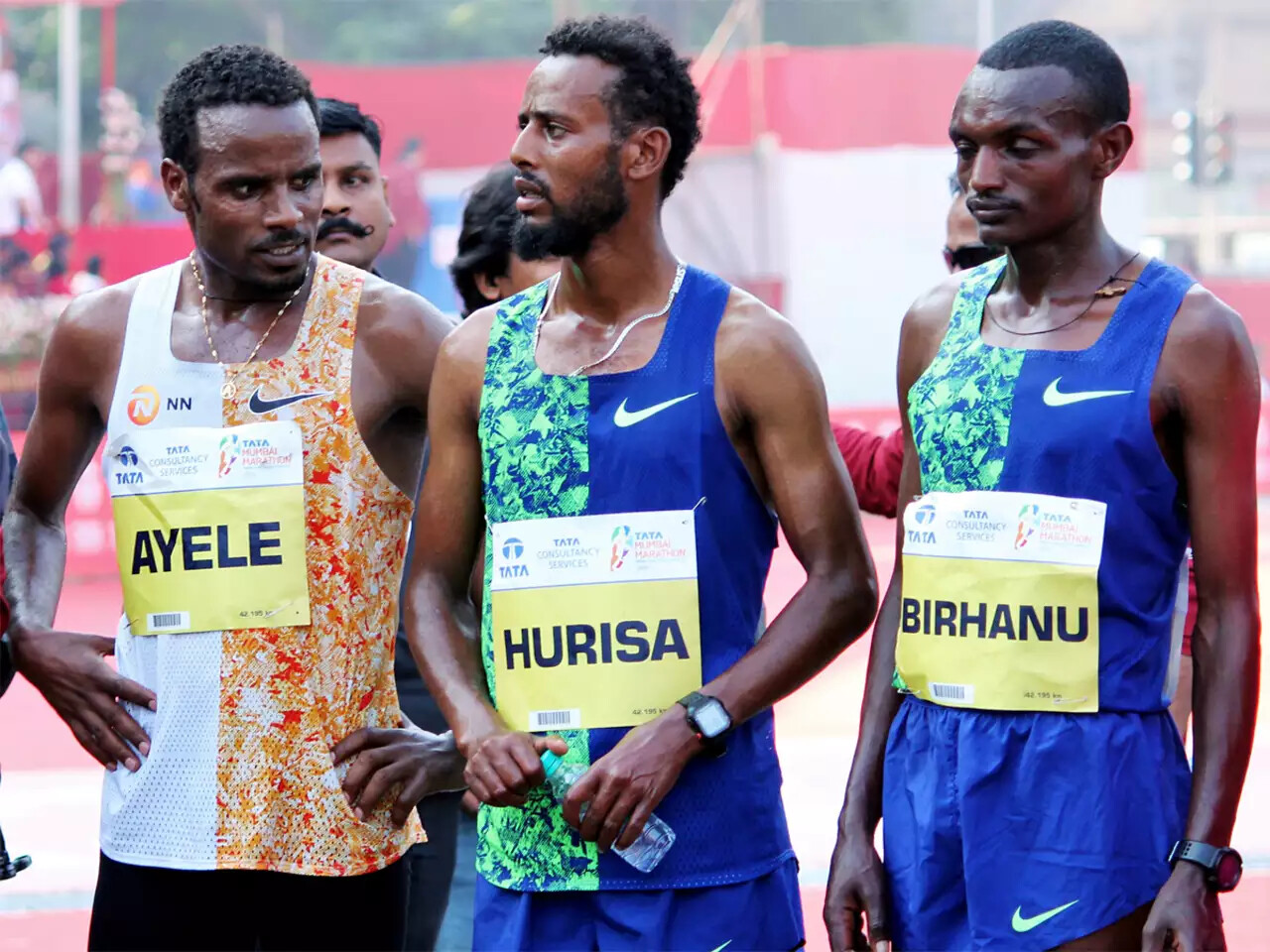
Not only did he run himself to exhaustion over the 42.2 kilometers but the €10,000 first-place prize money went to Langat. He admits he was very angry to learn of his mistake.
“I was shocked by that news when (Eritrean runner) Tadesse Abraham told me that I was disqualified,” he remembers, “because it wasn’t something I was expecting. Yes, I was angry, definitely.”
As an indication of Hurisa’s potential Langat returned to Vienna a year later and finished second in 2:06:59. The Ethiopian believes he is capable of times quicker than this.
Since then he has put the disappointment behind him. Earlier this year he finished second in the Stockholm Marathon. The race features many of the sites of the Swedish capital. But can also be challenging due to its numerous turns and warm June weather. His time there was a modest 2:11:01 on a hot day. Toronto Waterfront Marathon has far fewer turns and with a course record of 2:05:00 (Philemon Rono of Kenya) is far more inviting. He is optimistic of a great run in Toronto after some good early training sessions.
“It’s going great and yes, I’m pleased with my fitness level more than ever,” he reports. “I have been training for six or seven days in a week. Compared to previous marathon buildups it has been much better.”
Asked to reveal his goal for Toronto he is concise and to the point: “I would like to achieve a victory with a good time.”
Hurisa grew up in Ambo in western Ethiopia. Kenenisa Bekele was inspired by him winning the three-time Olympic titles and setting world 5,000m and 10,000m records. Hurisa was recruited by the Bahrain Athletics Federation after a cross-country race in Oromia. He was still in his teens.
For three years he lived in the oil-rich country earning a salary to run. At the 2015 World Cross Country Championships in Guiyang, China he placed 22nd in the Under-20 race helping Bahrain to a 4th place finish. A year later though he went back to Ethiopia and now travels on an Ethiopian passport.
These days he is focused on the marathon under the watchful eye of coach Gemedu Dedefo and enjoys spending time with his wife and two children.
“I like to spend my time with my family – I’m married and I have one boy and one girl – and I like going to church,” he explains. “I do return to my birth village whenever there is holiday.”
Conditions are likely to be cooler in Toronto compared to what he experienced in Mumbai. Clearly, he will be prepared to run with the leaders. And he is certainly due some good luck.
by Paul Gains
Login to leave a comment
TCS Toronto Waterfront Marathon
The Scotiabank Toronto Waterfront Marathon, Half-Marathon & 5k Run / Walk is organized by Canada Running Series Inc., organizers of the Canada Running Series, "A selection of Canada's best runs!" Canada Running Series annually organizes eight events in Montreal, Toronto and Vancouver that vary in distance from the 5k to the marathon. The Scotiabank Toronto Waterfront Marathon and Half-Marathon are...
more...Derara Hurisa is the latest in a long list of Ethiopian greats to commit to the 2023 TCS Toronto Waterfront Marathon
Derara Hurisa is the latest in a long list of Ethiopian greats to commit to the 2023 TCS Toronto Waterfront Marathon scheduled for October 15th. Once again, the event is a World Athletics Elite Label race.
The 26-year-old has had an extraordinary marathon career to date ever since winning in his debut at the 2020 Mumbai Marathon. There he ran 2:08:09 which remains his personal best despite a few other memorable outings.
Two years ago Hurisa won the Guadalajara Marathon at 1,600m altitude in Mexico eight months after achieving notoriety for all the wrong reasons in Vienna. Hurisa, then still relatively young at 23 years of age, crossed the finish line first at the Vienna Marathon with a time of 2:09:22 three seconds ahead of Kenya’s Leonard Langat. No sooner had Hurisa crossed the finish then officials approached him and within minutes he was disqualified.
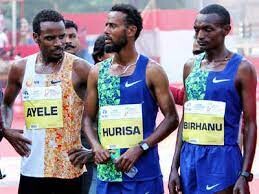
World Athletics has instigated strict rules to limit the thickness of racing shoes and it was found that Hurisa had worn a different pair of shoes to those he submitted in the pre-race inspection. They were one centimetre too thick. It is believed this was the first time a marathoner had been disqualified under these rules.
“My preparation for Vienna marathon was very good,” he says looking back on the incident. “I had to switch my shoes because it was my very first time putting on those shoes. It wasn't the shoes I wear when I was in training. So I decided to switch and use them without knowing it was different. The colour was similar.”
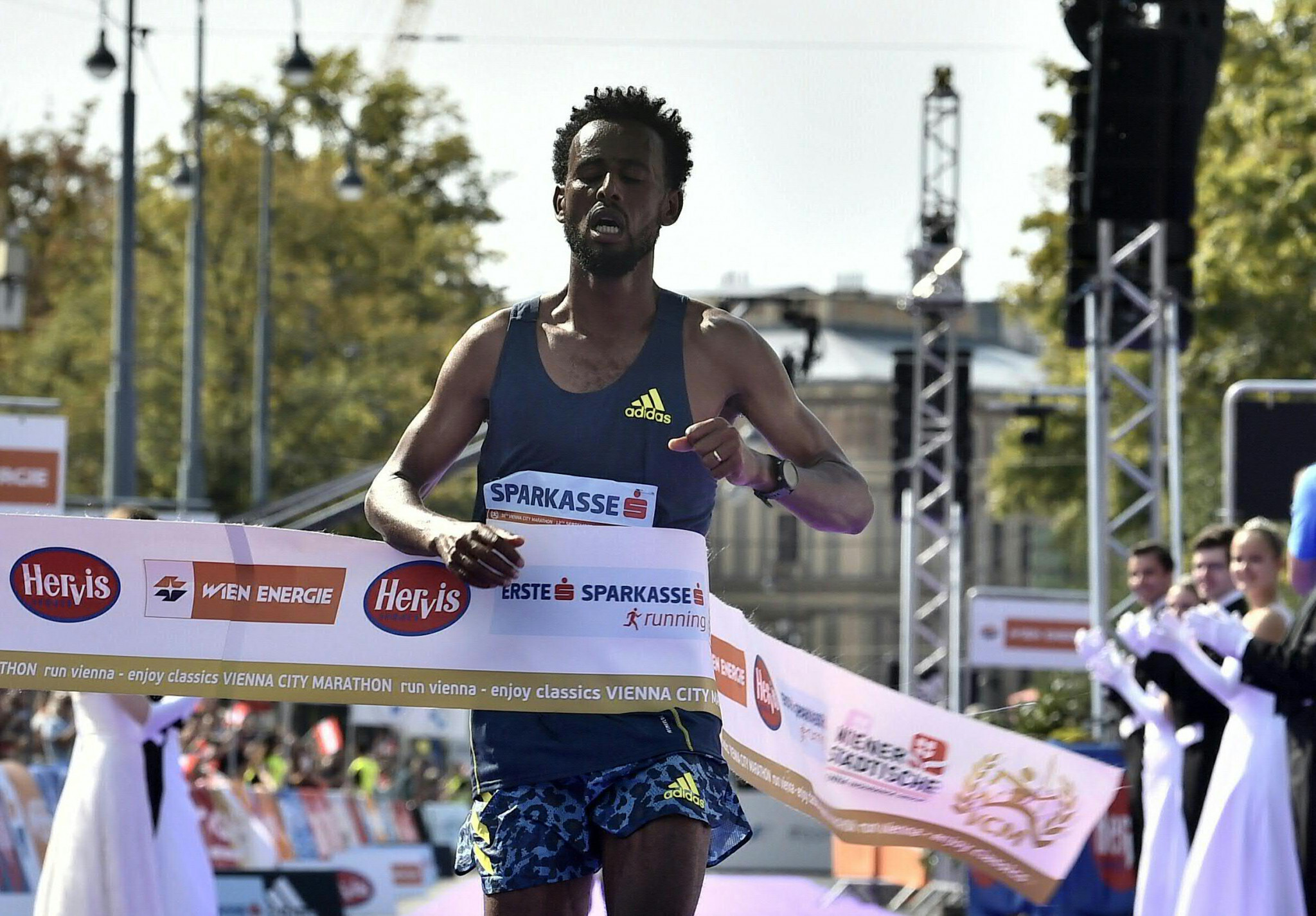
Not only did he run himself to exhaustion over the 42.2 kilometres but the €10,000 first place prize money went to Langat and not himself. He admits he was very angry to learn of his mistake.
“I was shocked by that news when (Eritrean runner) Tadesse Abraham told me that I was disqualified,” he remembers, “because it wasn't something I was expecting. Yes, I was angry, definitely.”
As an indication of Hurisa’s potential Langat returned to Vienna a year later and finished second in 2:06:59. The Ethiopian believes he is capable of times quicker than this. Since then he has put the disappointment behind him. Earlier this year he finished 2nd in the Stockholm Marathon which features many of the sites of the Swedish capital but can also be challenging due to its numerous turns and warm June weather. His time there was a modest 2:11:01 on a hot day. Toronto Waterfront Marathon has far less turns and with a course record of 2:05:00 (Philemon Rono of Kenya) is far more inviting. He is optimistic of a great run in Toronto after some good early training sessions.
“It’s going great and yes, I'm pleased with my fitness level more than ever,” he reports. “I have been training for six or seven days in a week. Compared to previous marathon buildups it has been much better.”
Asked to reveal his goal for Toronto he is concise and to the point: “I would like to achieve a victory with a good time.” Hurisa grew up in Ambo in western Ethiopia and was inspired by the exploits of Kenenisa Bekele the three-time Olympic champion and former world 5,000m and 10,000m record holder.
After a good result at a championship cross-country race in Oromia he was recruited by the Bahrain athletics federation while in his teens.
For three years he lived in the oil rich country earning a salary to run. At the 2015 World Cross Country Championships in Guiyang, China he placed 22nd in the Under-20 race helping Bahrain to a 4th place finish. A year later though he went back to Ethiopia and now travels on an Ethiopian passport.
These days he is focused on the marathon under the watchful eye of coach Gemedu Dedefo and enjoys spending time with his wife and two children.
"I like to spend my time with my family - I'm married and I have one boy and one girl - and I like going to church,” he explains. “I do return to my birth village whenever there is holiday.” Conditions are likely to be much cooler in Toronto compared to what he experienced in Mumbai in his victorious debut. Clearly, he will be prepared to run with the leaders. And he is certainly due some good luck.
About the TCS Toronto Waterfront Marathon
The TCS Toronto Waterfront Marathon is Canada’s premier running event and the grand finale of the Canada Running Series (CRS). Since 2017, the race has served as the Athletics Canada national marathon championship race and has doubled as the Olympic trials. Using innovation and organization as guiding principles, Canada Running Series stages great experiences for runners of all levels, from Canadian Olympians to recreational and charity runners. With a mission of “building community through the sport of running,” CRS is committed to making sport part of sustainable communities and the city-building process.
To learn more about the TCS Toronto Waterfront Marathon, visit TorontoWaterFrontMarathon.com.
by Paul Gains
Login to leave a comment
TCS Toronto Waterfront Marathon
The Scotiabank Toronto Waterfront Marathon, Half-Marathon & 5k Run / Walk is organized by Canada Running Series Inc., organizers of the Canada Running Series, "A selection of Canada's best runs!" Canada Running Series annually organizes eight events in Montreal, Toronto and Vancouver that vary in distance from the 5k to the marathon. The Scotiabank Toronto Waterfront Marathon and Half-Marathon are...
more...Ethiopians Ashenafi Moges and Sifan Melaku runs away with titles at 2023 Stockholm Marathon
Ethiopia’s dominated the 2023 Stockholm Marathon, a World Athletics Label Road Race event, took place on Saturday, June 3. The following are top 20 results from 2023 Stockholm Marathon with Ashenafi Moges and Sifan Melaku running away with the tiles.
On the men’s, Moges away late to win with a time of 2:10:32 pulling away from his countryman Derara Hurisa (Ethiopia) who finished second in a time 2:11:01 ahead of Tsegaye Mekonnen (Ethiopia) who ran 2:12:32 for third place.
The Sweden National Senior Marathon Championships went to Samuel Tsegay after finishing fifth overall with a time of 2:14:28.
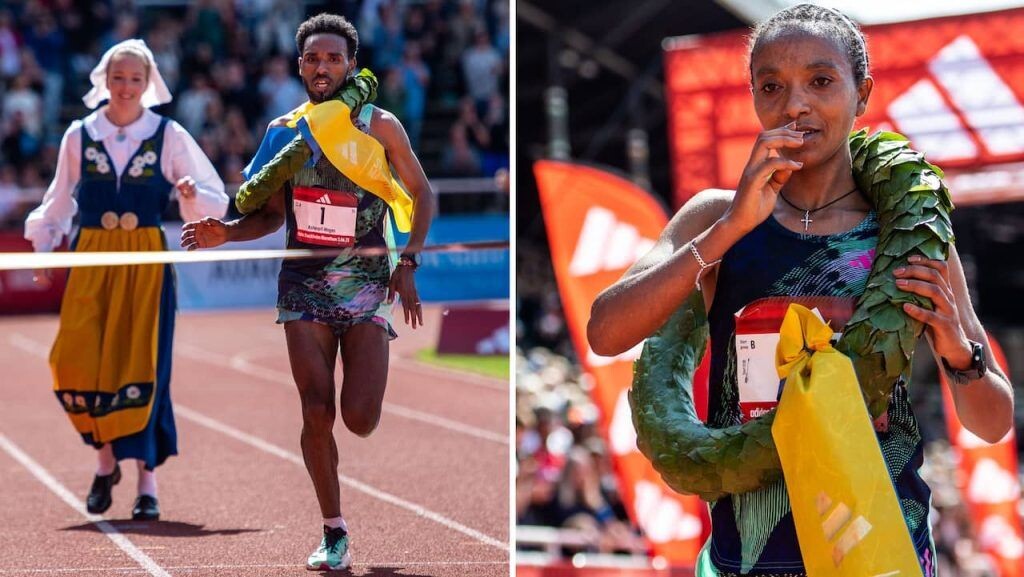
On the women’s side, Ethiopian athletes swept the competition with Sifan Melaku running 2:30:39 for the victory. Her compatriot Sorome Negash (Ethiopia) clocked 02:33:26 for second place with Yenenesh Dinkesa (Ethiopia) getting third in 2:36:39.
The Sweden national title went to Carolina Wikström (Sweden), who finished fourth overall with a time of 2:36:52.
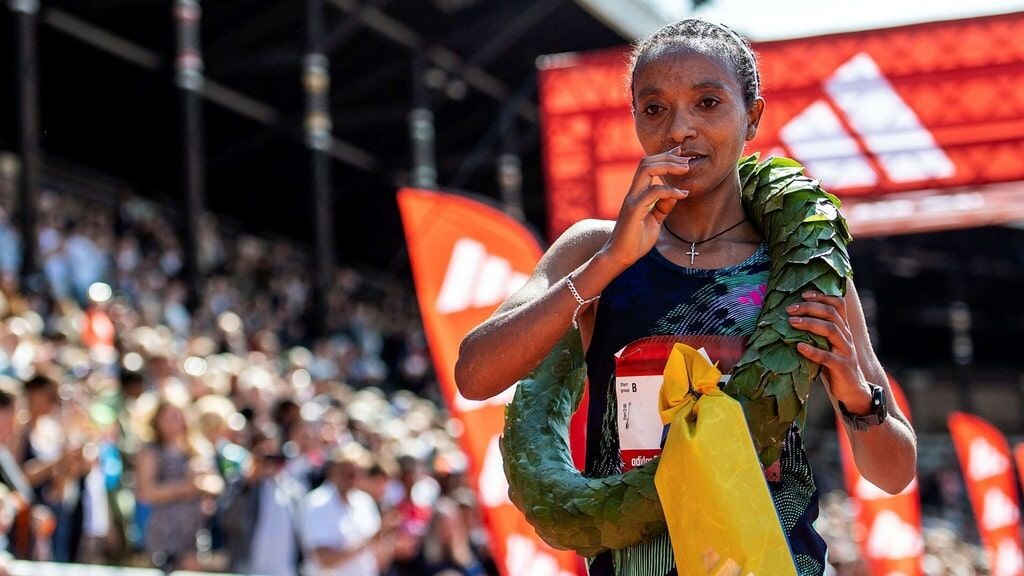
by Glen Andrews
Login to leave a comment
ADIDAS Stockholm Marathon
ASICS Stockholm Marathon is an exciting race in a beautiful city with runners from all over the world. This is one of the major sporting events in Sweden with hundreds of thousands of spectators along the route cheering the participants. The race takes you through Stockholm, one of the world’s most beautiful capitals. Built on 14 islands around one of...
more...Edwin Kimaiyo to lead Kenyan trio at Stockholm Marathon
The 2011 Berlin Marathon bronze medalist Edwin Kimaiyo will be hoping to debut the 2023 season on a high with a win at the 44th edition of the Stockholm Marathon, Sweden on June 3.
Kimaiyo will be joined by fellow countrymen Robert Kipkemboi and Shadrack Kimining in the Scandinavian nation.

Kimaiyo last raced in October last year at the Munich Marathon where he finished fifth in 2:11:02 a race won by compatriot Philemon Kipchumba in 2:07:28.
The 37-year-old will be aiming to lower his personal best of 2:09:12 that he set at the Shanghai Marathon, China in November 2017.

The Kenyan trio will face stiff competition from an Ethiopian quintet led by the world junior record holder Tsegaye Mekonnen.
Mekonnen caused a major upset in the world of athletics when he won the Dubai Marathon in 2014 aged just 19 years old in a time of 2:04:32 to set the the unofficial world junior record.
Others who will pose a threat to the Kenyans include; Ethiopia's Ashenafi Moges, Zewdu Hailu, Derara Hurisa and Fikre Workneh, Eritrea's Berhane Tesfay and Mao Ako from Tanzania.
The course record is held by Ethiopia's Nigussie Sahlesilassie 2:10:10 a time he set in 2019.
by Samuel Nganga
Login to leave a comment
ADIDAS Stockholm Marathon
ASICS Stockholm Marathon is an exciting race in a beautiful city with runners from all over the world. This is one of the major sporting events in Sweden with hundreds of thousands of spectators along the route cheering the participants. The race takes you through Stockholm, one of the world’s most beautiful capitals. Built on 14 islands around one of...
more...Ethiopia’s Lemi & Haymanot set course records in Tata Mumbai Marathon
Mumbai sprung to life early on a nippy Sunday morning as over 55,000 people took part in the 18th edition of the Tata Mumbai Marathon.
Records tumbled in Asia’s most prestigious race as the Ethiopian duo of Hayle Lemi and Anchalem Haymanot won with new course records to take home USD 45,000 winners prize and a course record bonus of USD 15,000 each.
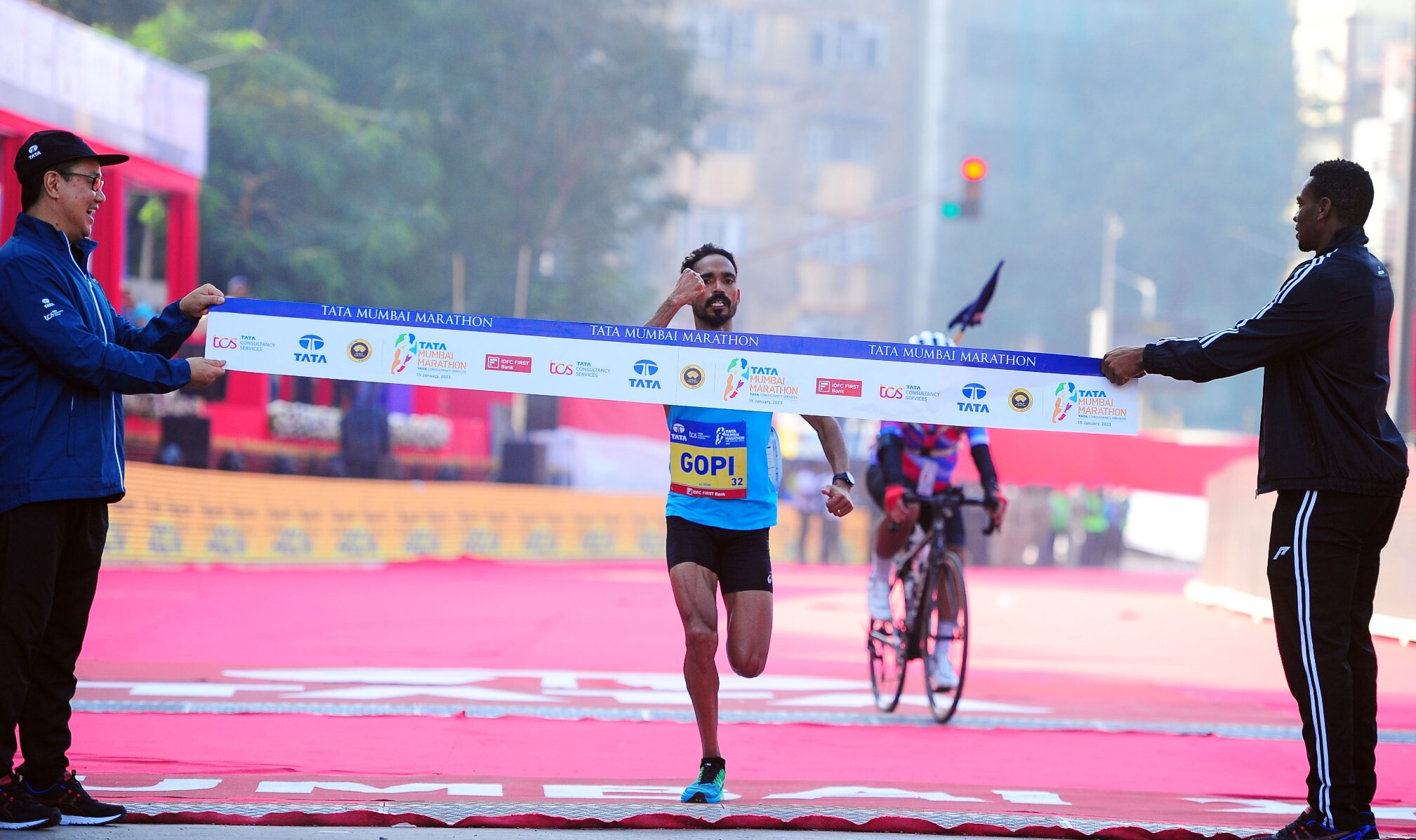
Lemi took advantage of the slow pace in the first half of the men's race. The 2016 Boson Marathon winner ran alongside the defending champion and countryman Derara Hurisa, Kenyan Philemon Rono and half a dozen other runners as they passed through the iconic Rajiv Gandhi Sea Link towards the halfway mark.
Lemi, Rono and another Ethiopian Hailu Zewdu broke away from the rest of the group at the 26th kilometre. The three athletes climbed the Peddar Road together on their return journey. Lemi increased his pace while coming down to enter Chowpatty beach corner and started running on the Marine Drive well ahead of the other two. His 2:07:32 is an early season lead in the world this year. Rono clocked 2:08:44 and Zewdu 2:10:23 for the other two places on the podium.
The women started their race at a fast pace and there was a keen tussle between five Ethiopian runners at the midway stage. Worknesh Alemu, the 2019 champion here, drew from her past experience on the course to take the lead at that point. However, Haymanot, a marathon debutant, broke away from Alemu. Rahma Tusa, two times Rome Marathon winner, and 2022 Sydney marathon runner-up Letebrhan Haylay ran shoulder-to-shoulder with her. "Running along with these two experienced runners with fast timings to their credit was really a challenge, but I gained much experience from them,” Haymanot revealed during a post-race press conference.
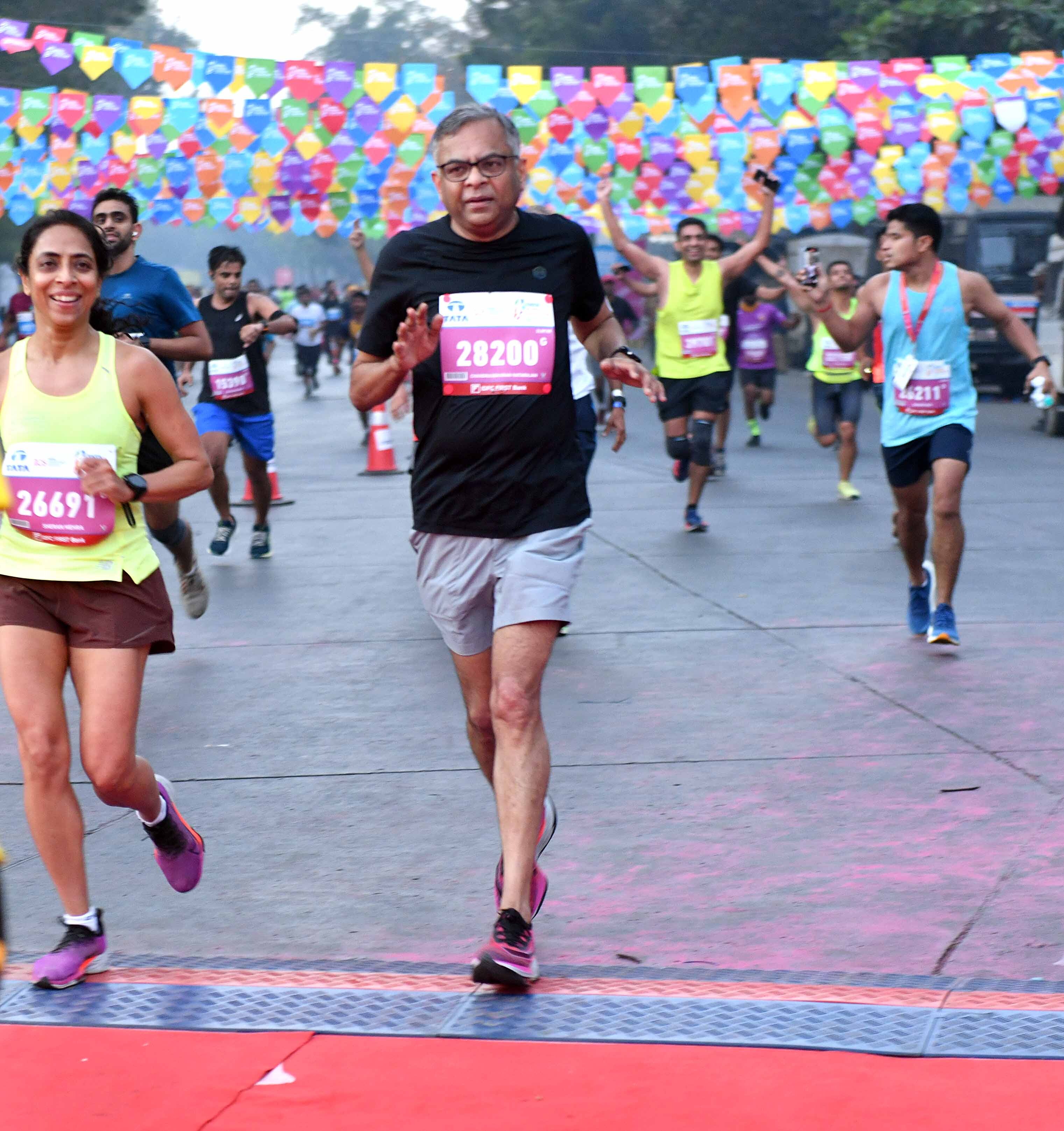
For the first time, the podium finishers in the women’s section finished under 2:25, as Tusa (2:24:22) also finished under the previous course record of 2:24:33 held by Valentine Kipketer (Kenya) since 2013.
Gopi T made a winning return to competitive action while Chavi Yadav pulled off a spectacular victory on her marathon debut in the Indian race.
Olympian Gopi, the first Indian male to win the Asian Marathon Championship in 2017, clocked 2:16:41 to finish on top of the domestic Elites and 10th overall in the 18th edition of the USD 405,000 prize fund World Athletics Gold Label Road Race.
All eyes were on Gopi who was returning to competition after three years following knee surgery and the Army runner didn’t disappoint as he clocked 2:16:41, and was followed by Man Singh, who was 17 seconds behind, and Kalidas Hirave.
Gopi fell short of the upcoming Asian Games cut-off of 2:15 but said the win in India’s largest marathon gave him a tremendous boost.
“It felt good to be back after three years. I maintained a good pace for the first 30-odd kilometres but slowed down towards the end,” the Army runner told a news conference. “I never give up,” added Gopi, who previously won in 2018.
The 2020 winner Srinu Bugatha finished fifth in 2:23:05.
Bhopal’s Chavi said she was running the classic distance for the first time. “I didn’t run more than 25 km even in training,” she told a news conference. Arati Patil finished second, over 10 minutes behind, and Renu Singh was third.
The Elite Indian podium finishers were richer by INR 500,000, 400,000 & 300,000 respectively.
Meanwhile, Parul Chaudhary bettered her course mark in the women’s half marathon and Murli Gavit won the men’s crown. The podium finishers took home INR 100,000, 75,000 & 60,000 respectively.
Login to leave a comment
Tata Mumbai Marathon
Distance running epitomizes the power of one’s dreams and the awareness of one’s abilities to realize those dreams. Unlike other competitive sports, it is an intensely personal experience. The Tata Mumbai Marathon is One of the World's Leading Marathons. The event boasts of fundraising platform which is managed by United Way Mumbai, the official philanthropy partner of the event. Over...
more...Defending champion Hurisa eyes winning return in Tata Mumbai Marathon
Defending champion Derara Hurisa is back to where his marathon journey began — the prestigious Tata Mumbai Marathon — as he eyes a winning return from injury in the upcoming 18th edition on Sunday, January 15.
The 25-year-old Ethiopian clinched the 2020 crown with a blistering course record of 2:08:09 and went on to win both his outings over the classic distance in 2021 — Vienna and Guadalajara Marathon (Mexico) — but was disqualified in Austria due to a shoe technicality.

He spent 2022 recovering from a hip injury.
“I’ll try to defend my title, but the competition here is really good,” Hurisa told a news conference on Saturday. “My training was nice, with the focus on the Tata Mumbai Marathon,” he added.
In the men’s field, 10 runners hold personal bests under the course record, including Hurisa’s compatriot and training partner Hayle Lemi.
The 28-year-old is a winner of seven marathons, including the Boston Marathon in 2016 and Dubai in 2015. “The conditions here look good for me,” said Lemi, a.k.a. Lemi Berhanu, runner-up in the 2021 Boston Marathon in 2:10.37 and with a preference for warm weather.
Leading the Kenyan charge in the men’s International Elite field of 16 is Philemon Rono, the training partner of marathon legend Eliud Kipchoge. “My training has been good, I just got to go out there and express myself,” said the 31-year-old, who finished an impressive sixth at the 2019 Boston Marathon and won the Toronto Marathon for the third time that year in 2:05:00.
The women’s International Elite field will feature 2019 winner Worknesh Alemu of Ethiopia and the 2020 runner-up from Kenya, Rodah Jepkorir Tanui, and six runners with personal bests under the course record (2.24.33), headlined by the experienced Kenyan Sharon Cherop.
The 18th edition of the USD 405,000 prize fund World Athletics Gold Label Road Race takes place after a two-year pandemic-forced break and will also witness over 55,000 amateurs across six categories on its much-awaited return.
The elite men’s and women’s winners will take home USD 45,000 each. The runners will be further incentivized by a Course Record Bonus of USD 15,000.
Login to leave a comment
Tata Mumbai Marathon
Distance running epitomizes the power of one’s dreams and the awareness of one’s abilities to realize those dreams. Unlike other competitive sports, it is an intensely personal experience. The Tata Mumbai Marathon is One of the World's Leading Marathons. The event boasts of fundraising platform which is managed by United Way Mumbai, the official philanthropy partner of the event. Over...
more...Fit-again Philemon Rono bullish ahead of Sunday's Mumbai Marathon
Fit-again Philemon Rono remains optimistic ahead of his Mumbai Marathon on January 15, in Mumbai, india.
Rono, popularly known as 'Baby Police' due to his pint-sized stature, Rono said he has managed to fend off a calf injury in time for his first outing of the year.
“I missed last year’s last season due to an injury but I have fully and ready for the Mumbai race,” said Rono, who is based at the Global Sports Communication in Kaptagat.
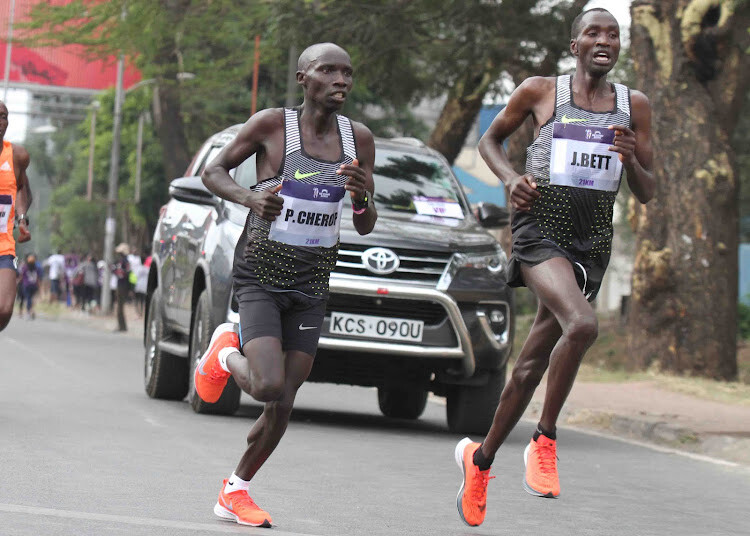
Rono, who won the 2017, 2018 and 2019 Toronto marathon will be up against defending champion Derara Hurisa from Ethiopia, who clocked 2:08:09 to break the course record of 2:08:35, set by Kenya’s Gideon Kipketer.
“I want to have a better time in India. I have competed in some half marathons in the country but I am heading there for my first marathon. I have previously run in New Delhi and Bangalore,” he added.
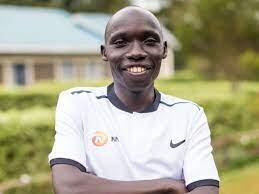
Abshero, who was second behind Hurisa at this event last year, comes to this race with the fastest time of 2:04:23 set while winning the 2012 Dubai Marathon.
Rono established himself globally as a pacemaker, pacing for former world marathon record holder Wilson Kipsang (2:03:23). The 31 year-old trains alongside world marathon record holder Eliud Kipchoge, two-time world champion Abel Kirui, Laban Korir, Augustin Choge among other top stars.
by Emmanuel Sabuni
Login to leave a comment
Tata Mumbai Marathon
Distance running epitomizes the power of one’s dreams and the awareness of one’s abilities to realize those dreams. Unlike other competitive sports, it is an intensely personal experience. The Tata Mumbai Marathon is One of the World's Leading Marathons. The event boasts of fundraising platform which is managed by United Way Mumbai, the official philanthropy partner of the event. Over...
more...Ethiopian Derara Hurisa to defend crown at 2023 Tata Mumbai Marathon
Ethiopia’s Derara Hurisa returns to defend his crown at Asia’s most prestigious Tata Mumbai Marathon on January 15, 2023, in a competitive Elite men’s field, with a dozen runners holding personal bests under the 2:08:09 course record he set in 2020.
The 18th edition of the USD 405,000 prize fund World Athletics Gold Label Road Race takes place after a two-year pandemic-forced break and will also witness over 55,000 amateurs across six categories on its much-awaited return.
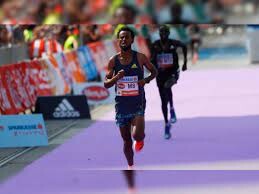
The elite men’s and women’s winners will take home USD 45,000 each. The runners will be
further incentivized by a Course Record Bonus of USD 15,000.
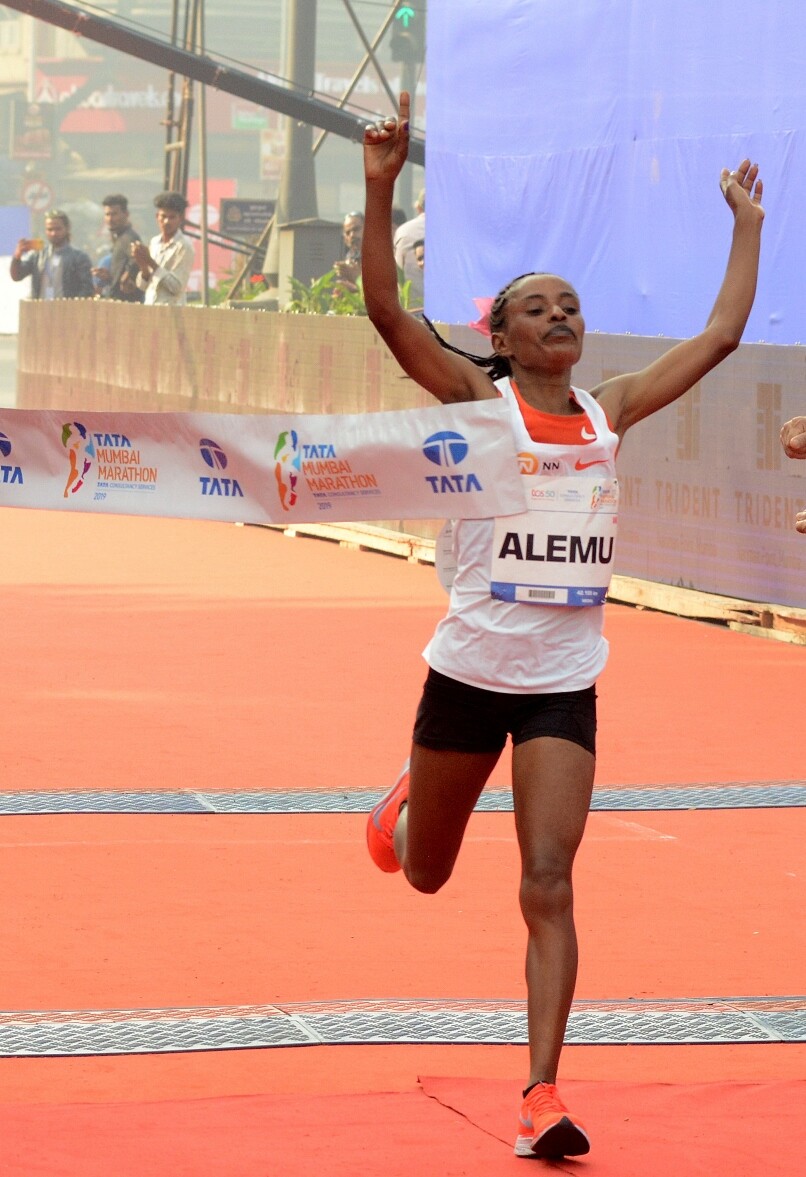
“I’m up for the challenge and have set my sights on the title,” said Hurisa, who clinched the 2021 Guadalajara Marathon in Mexico in a time of 2:12:28.
Toeing the start line in the men’s section are also Hurisa’s compatriots Ayele Abshero and
Hayle Lemi and Kenya’s Philemon Rono, a training partner of the legendary Eliud Kipchoge.
Abshero was runner-up here in 2020, 11 seconds adrift of Hurisa, on an AIMS-certified course that is widely regarded as challenging. Abshero, who finished 10th at the 2022 Linz Marathon in Austria in 2:09:37, has a personal best of 2:04:23, which makes him the fastest in the field.
With a personal best of 2:04:33, Lemi is the second fastest in the group.
“I’m excited about my first Tata Mumbai Marathon. I’ve heard it’s a tough course,” said Lemi, winner of seven marathons, including the Boston Marathon in 2016 and Dubai in 2015. “It’s a tremendous field and is going to be close,” added the Ethiopian, a.k.a. Lemi Berhanu, who was runner-up in the 2021 Boston Marathon.
Rono finished an impressive sixth at the 2019 Boston Marathon and won the Toronto Marathon the same year in 2:05:00. He recorded sixth-place finishes at the 2021 Abu Dubai Marathon and the 2022 Seoul Marathon.
Chepkech, the dark horse
In the women’s field, seven runners hold personal bests under the course record of 2:24:33 set by Valentine Kipketer in 2013, with Dera Dida (Ethiopia), Sharon Cherop (Kenya) and Rahma Tusa (Ethiopia) leading the charge on their debut here.
Silver medalist at the 2019 World Cross Country Championships, Dida won bronze in 10,000m at the 2019 African Games. In 2022, she won the Bejaia Half Marathon in 71:17 and finished eighth at the Great Ethiopian Run 10K.
“The Tata Mumbai Marathon has been on my running bucket list for some time. I’ve heard the people of Mumbai and India are very passionate about the running festival, and I look forward to this experience,” Dida said.
Cherop won marathon bronze at the 2011 World Championships and emerged victorious at the 2012 Boston Marathon. In 2022, she finished third at the Nairobi Marathon and the Buenos Aires Marathon.
Tusa took fourth place at the 2022 Sydney Marathon in 2:26:30 and the 2021 Valencia Marathon (in 2:23:20). She was fifth at the 2018 New York Marathon and won in Rome the same year.
Kenya’s Sheila Chepkech, also a first-timer in Mumbai, is the dark horse here. She won the 2022 Nairobi Marathon in 02:27:04. Previously, she finished second at the 2018 Milan Marathon and the 2017 Kosice Marathon. Also in the fray is the 2019 winner Worknesh Alemu of Ethiopia.
Vivek Singh, Jt MD, race promoter Procam International, said: “A truly world-class field will descend in Mumbai for the Tata Mumbai Marathon, a reflection of the event’s stature as one of the top 10 marathons in the world. The TMM returns bigger and better, and the spirit of #HarDilMumbai will burst to life come race day, with runners taking part across six categories.”
International Elite field:
Men:
Derara Hurisa (ETH) 2.08.09 (Course Record holder)
Ayele Abshero (ETH) 2.04.23
Hayle Lemi (ETH) 2.04.33
Philemon Rono (KEN) 2.05.00
Kebede Wami (ETH) 2.06.03
Aychew Bantie (ETH) 2.06.23
Hailu Zewdu (ETH) 2.06.31
Merhawi Kesete (ERI) 2:06:36
Masresha Bere (ETH) 2.06.44
Okubay Tsegay (ERI) 2.06.46
Reuben Kerio (KEN) 2.07.00
Hosea Kiplimo (KEN) 2.07.39
Abdela Godana (ETH) 2.08.06
John Langat (KEN) 2.09.46
Abida Ezamzamil (MOR) 2.09.52
Mesfin Nigusu (ETH) 2.09.53
Augustine Choge (KEN) 2.20.53
Women:
Dera Dida (ETH) 2.21.45
Sharon Cherop (KEN) 2.22.28
Rahma Tusa (ETH) 2.23.20
Sifan Melaku (ETH) 2.23.49
Adanech Anbesa (ETH) 2:24:07
Zinah Senbeta (ETH) 2.24.21
Ayantu Kumela (ETH) 2.24.29
Worknesh Alemu (ETH) 2.24.42
Letebrhan Haylay (ETH) 2.24.47
Zenebu Fikadu (ETH) 2.25.11
Rodah Tanui (KEN) 2.25.46
Kumeshi Sichala (ETH) 2.26.01
Lemeneh Kasu Bitew (ETH) 2.26.18
Sheila Chepkech (KEN) 2.27.04
Beshadu Birbirsa (ETH) 2.30.03
Gode Chala (ETH) 2.33.22
Anchalem Haymanot (ETH) Debut.
by Sports Africa
Login to leave a comment
Tata Mumbai Marathon
Distance running epitomizes the power of one’s dreams and the awareness of one’s abilities to realize those dreams. Unlike other competitive sports, it is an intensely personal experience. The Tata Mumbai Marathon is One of the World's Leading Marathons. The event boasts of fundraising platform which is managed by United Way Mumbai, the official philanthropy partner of the event. Over...
more...Strong Vienna elite fields could attack course records
Both course records could become a target at the Vienna City Marathon, which features strong elite races on April 24. Kenyans Leonard Langat and Vibian Chepkirui will return to defend their Vienna titles while there are three men on the start list who have broken 2:06 and five women featuring personal bests of sub 2:25.
With regard to these personal records it will be strongest line-up in the history of the Vienna City Marathon which will see its 39th edition next week. Including races at shorter distances more than 31,000 runners have registered for Austria’s biggest running event, a World Athletics Marathon Label Road Race.
“We are very happy that we were able to surpass the mark of 30,000 entries. Compared to our comeback race in September 2021 this is a nice step forward. We feel the enthusiasm of the runners,“ said Kathrin Widu, the General Manager of the Vienna City Marathon.
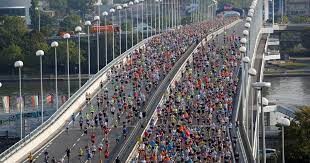
There has never been an Eritrean winner in the history of the Vienna City Marathon which had its first edition back in 1984. This may change next week though since the two fastest entrants are from this country: Goitom Kifle and Oqbe Kibrom feature personal bests of 2:05:28 and 2:05:53 respectively. Kifle had a fine year in 2021: He was third in Enschede, 14th in the Olympic marathon in Sapporo and then 6th in Valencia, where he ran his PB. With his personal record the Eritrean is a little faster than Vienna’s course record of 2:05:41 by Ethiopia’s Getu Feluke in 2014.
Abdi Fufa of Ethiopia is the third athlete in Vienna’s line-up who has run sub 2:06. A year ago he was second in Siena’s elite only race with 2:05:57. It looks a tough task for Leonard Langat to defend his title in the Austrian capital. The Kenyan improved to 2:09:25 in Vienna last September. But with this PB he is only the eighth fastest athlete on the start list.
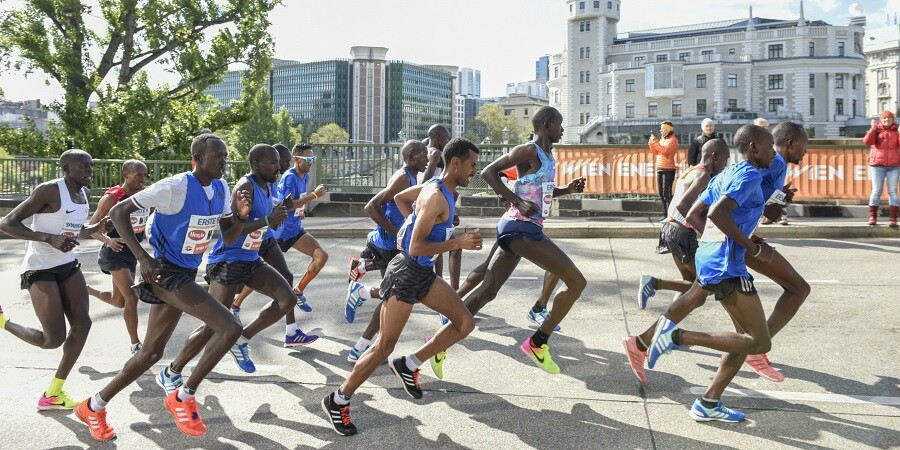
Unfortunately there were a number of cancellations from elite runners recently. Among them are Mekuant Ayenew and fellow-Ethiopian Derara Hurisa, who had originally crossed the line first in last year’s Vienna City Marathon. However he then had to be disqualified for wearing illegal racing shoes and Leonard Langat became the winner.
The fastest runner on the women’s start list is Caroline Kilel, who ran 2:22:34 when she took the Frankfurt Marathon back in 2013. While the Kenyan did not reach these sort of times recently there are other athletes who showed promising last year. Defending champion Vibian Chepkirui may only be number five on the list with her PB of 2:24:29.
However she did run this time last September in Vienna in very warm conditions. Afterwards the Kenyan said that she could have been at least two minutes faster in more suitable conditions.
Vibian Chepkirui could be capable of attacking the course record of fellow-Kenyan Nancy Kiprop who was the winner in 2019 with 2:22:12.
Kenya’s Ruth Chebitok and Ethiopia’s Sifan Melaku are number two and three on Vienna’s start list with PBs of 2:23:29 and 2:23:49 respectively. Sheila Jerotich of Kenya is a contender for victory as well. She took the Istanbul Marathon in November, improving to 2:24:15.
Elite fields with personal bests
Men:
Goitom Kifle ERI 2:05:28
Oqbe Kibrom ERI 2:05:53
Abdi Fufa ETH 2:05:57
Raymond Choge KEN 2:08:11
Cosmas Muteti KEN 2:08:45
Weldu Gebretsadik NOR 2:09:14
Edwin Soi KEN 2:09:16
Leonard Langat KEN 2:09:25
Charles Ndiema KEN 2:10:43
Lemawork Ketema AUT 2:10:44
Jeison Suarez COL 2:10:51
Iraitz Arrospide ESP 2:10.59
Noah Kipkemboi KEN 2:11:09
Ebba Chala ETH 2:11:27
Abraham Kipyatich KEN Debut
Timon Theuer AUT Debut
Women:
Caroline Kilel KEN 2:22:34
Ruth Chebitok KEN 2:23:29
Sifan Melaku ETH 2:23:49
Sheila Jerotich KEN 2:24:15
Vibian Chepkirui KEN 2:24:29
Esther Kakuri KEN 2:26:11
Urge Soboka ETH 2:28:10
Marcela Joglova CZE 2:28:16
Nataliya Lehonkova UKR 2:28:58
Kellys Arias COL 2:29:36
Viola Yator KEN 2:30:03
Teresiah Omosa KEN 2:30:12
Nataliya Lehonkova UKR 2:30:28
Login to leave a comment
Vienna City Marathon
More than 41,000 runners from over 110 nations take part in the Vienna City Marathon, cheered on by hundreds of thousands of spectators. From the start at UN City to the magnificent finish on the Heldenplatz, the excitement will never miss a beat. In recent years the Vienna City Marathon has succeeded in creating a unique position as a marathon...
more...Defending champion Leonard Langat will run against Derara Hurisa and Mekuant Ayenew at the Vienna City Marathon
Two defending champions will both be returning to the Vienna City Marathon on April 24th: Kenyans Leonard Langat and Vibian Chepkirui.
While some elite women’s contenders were released earlier, organisers now confirmed a number of male competitors.
There will be unprecedented depth in Vienna’s men’s elite field with five athletes featuring personal bests of sub 2:06. This group is led by Ethiopia’s Mekuant Ayenew who has a PB of 2:04:46. Additionally the Vienna City Marathon will feature a rematch between Derara Hurisa of Ethiopia, who had crossed the line first last year but was then disqualified for inadvertently wearing an illegal racing shoe, and Leonard Langat.
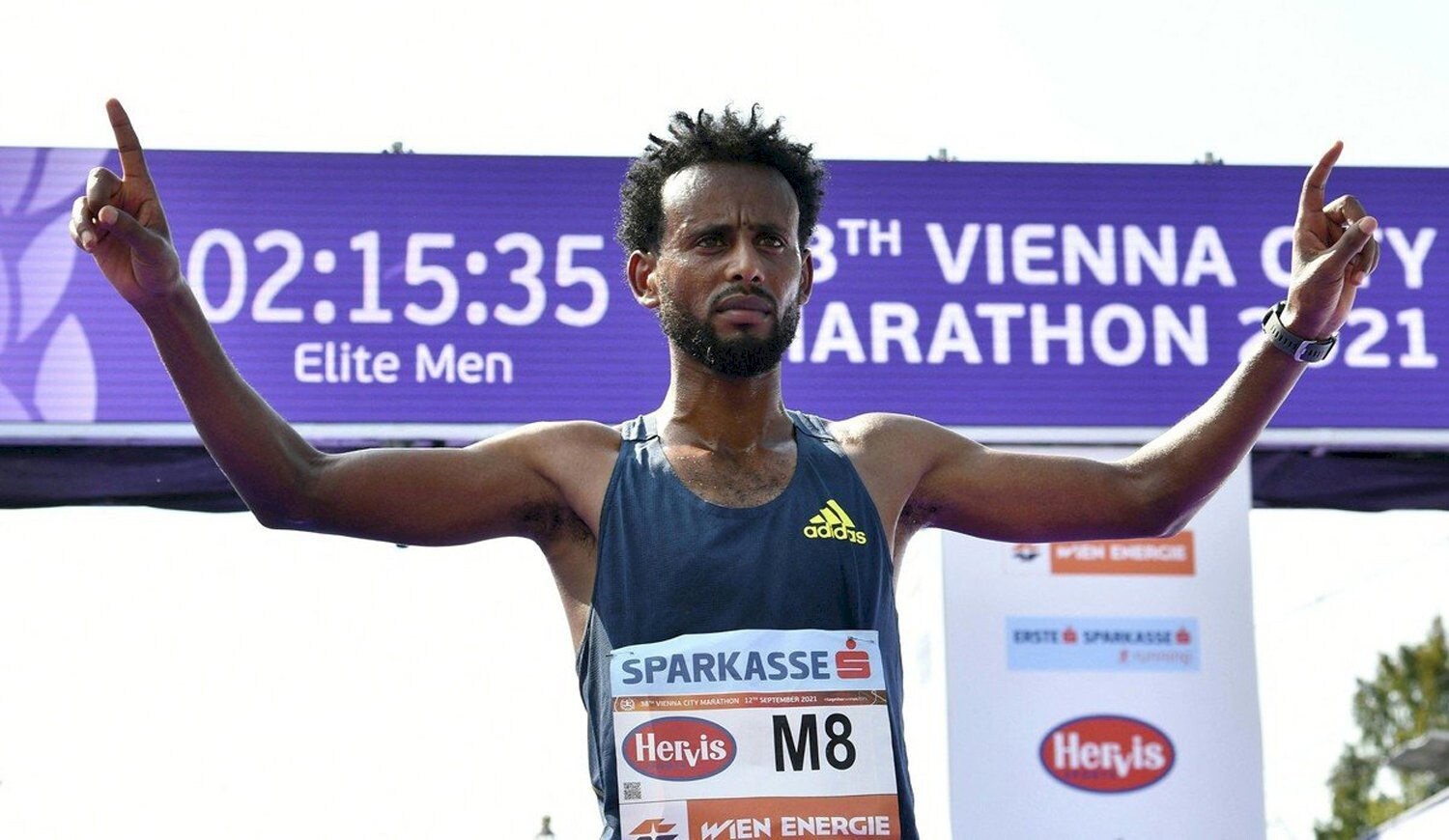
Well over 27,000 runners have so far registered for Austria’s leading road race, including entries for shorter running events. Online entry for the 39th Vienna City Marathon, which is a World Athletics Marathon Label Road Race, is still possible at: www.vienna-marathon.com
“Elite racing forms a thrilling part of our event. These runners bring high quality performances and often emotional stories to our race,” said Race Director Wolfgang Konrad. “We are very happy to welcome back both winners from last year to Vienna. And we keep our fingers crossed for Derara Hurisa, who will also return.”
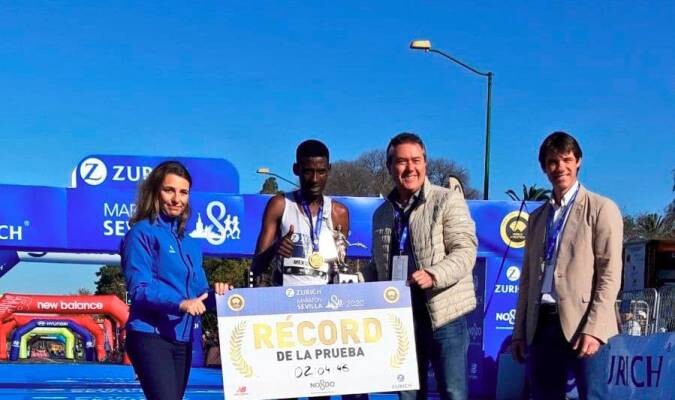
In unusually warm conditions Derara Hurisa became the first athlete being disqualified for wearing an illegal shoe in a major city marathon last September in Vienna. The Ethiopian, who has a personal best of 2:08:09, crossed the line first in 2:09:22. However it appeared the he wore shoes that have a sole thickness of five centimeters while a maximum of four is allowed. Derara Hurisa had chosen the shoes for the race because he used them in training and thought they were within the rules. The athlete looked upset and distraught when he learnt about the disqualification and will be eager to take his second chance when he returns to Vienna. Though he was happy to become the winner it was not the ideal scenario for Leonard Langat as well. “Of course I would have preferred to have broken the tape,” said the Kenyan, who improved his PB to 2:09:25 in Vienna last year.
Such is the strength of the elite field this time that both runners might have to improve their personal bests quite significantly if they want to be in contention for victory on 24th April. With a personal record of 2:04:46 Mekuant Ayenew is the second fastest runner ever entered into a Vienna City Marathon behind former world record holder Dennis Kimetto (2:02:57). The Kenyan did not finish the 2018 race. Mekuant Ayenew, who won the Sevilla Marathon 2020 when he clocked his PB, heads the start list.
The other four athletes with personal bests of sub 2:06 are Goitom Kifle of Eritrea (2:05:28), Bahrain’s Marius Kimutai (2:05:47), Oqbe Kibrom from Eritrea (2:05:53) and Ethiopian Abdi Fufa (2:05:57). While Kimutai was the winner of the Rotterdam Marathon in 2017 Kifle achieved a notable 14th place in the Olympic marathon in Sapporo last summer.
The group of leading runners look to be in a perfect position to target the course record of the Vienna City Marathon. Ethiopia’s Getu Feleke established this mark when he won the race with 2:05:41 back in 2014.
Login to leave a comment
Vienna City Marathon
More than 41,000 runners from over 110 nations take part in the Vienna City Marathon, cheered on by hundreds of thousands of spectators. From the start at UN City to the magnificent finish on the Heldenplatz, the excitement will never miss a beat. In recent years the Vienna City Marathon has succeeded in creating a unique position as a marathon...
more...Are the thicker shoes faster?
The recent disqualification of the Derara Hurisa from the Vienna marathon was the first high-profile disqualification of an athlete for a violation of the new footwear rules from World Athletics on the roads.
Hurisa’s shoe, the Adidas Adizero Prime X, had all the ingredients of a super shoe, including better foam with rigid pieces embedded. But it had one distinctive quality: It was thicker than the current regulations allow.
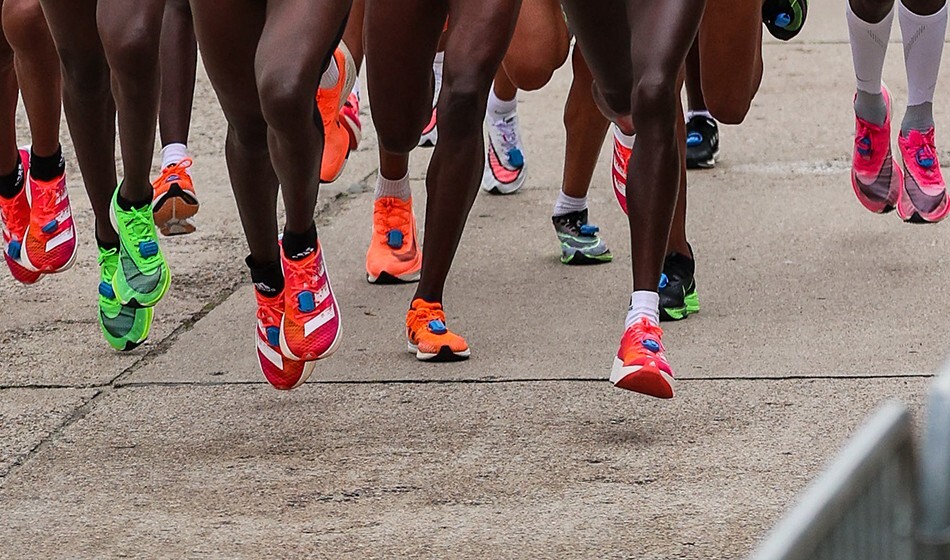
This revisits the classic question around the rules: Are thicker shoes faster?
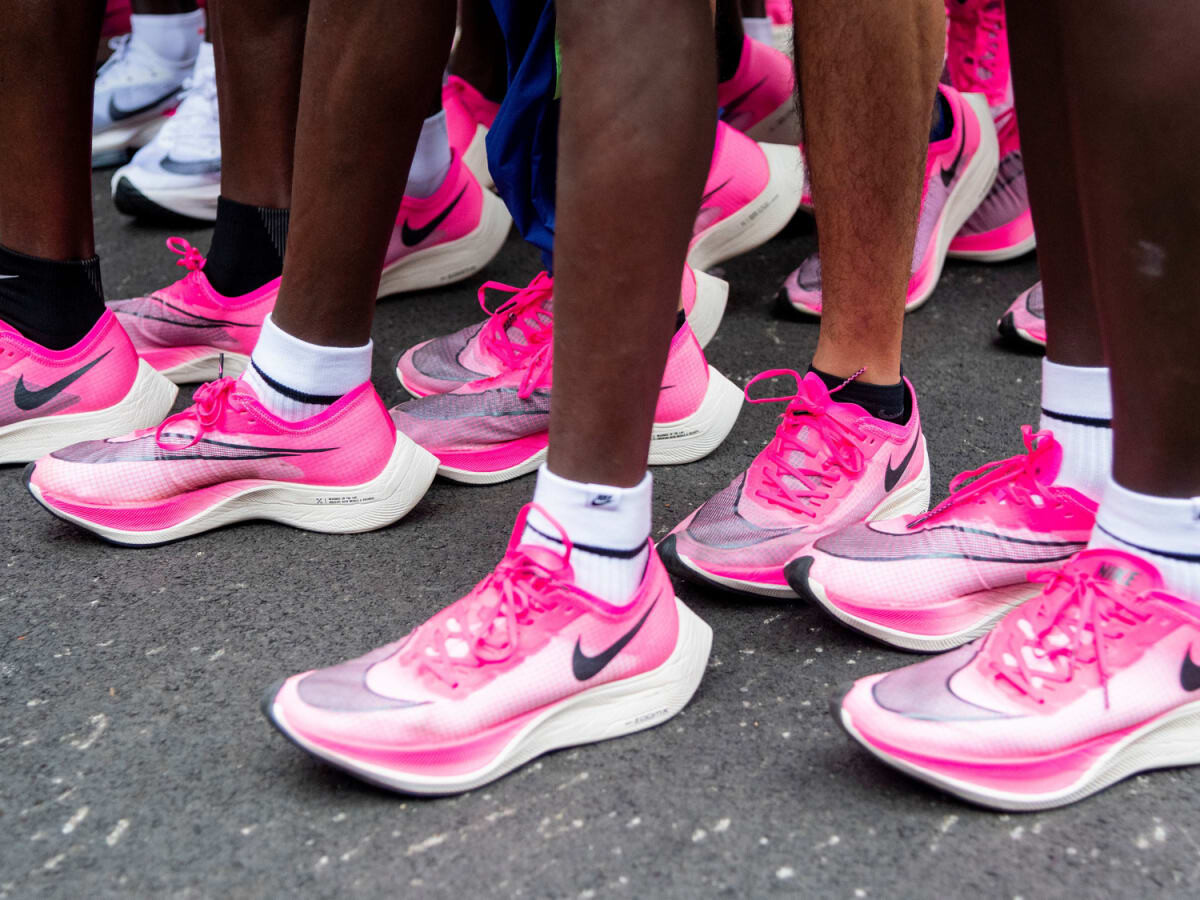
The answer is nuanced, but it boils down to this: Faster shoes are thick, but thicker shoes aren’t necessarily faster.
The shoes of today that are helping athletes run faster do so from the interaction between more perfect foam (lighter, softer, and more resilient polymers) and rigid architectural pieces (curved and embedded stiff plates and rods). In 2020, World Athletics put regulations in place to manage the potential performance advantages by limiting the thickness of the shoes and the extent of those architectural features. For a detailed look at the rationale for the sole thickness regulation strategy, Adding more of the foam to the bottom of runners’ feet is likely to be beneficial for two reasons.
First, its greater compliance (softer cushioning) and its higher resiliency (greater energy return) help the runner to run more efficiently by wasting less energy step-to-step and recycling more energy underfoot. If the foam is functioning like a spring, a longer and longer softer, more perfect spring can store more and more energy and give more and more of it back.
Second, the foam provides a three-dimensional matrix within which to put the aforementioned rigid pieces. The specific mechanisms of how and the extent to which the rigid pieces (e.g., curved carbon fiber plates or rods) are beneficial are still being elucidated, but it’s likely helping the body both use the benefits of that foam—the foam on its own it may be too soft or unstable—and and by subtly manipulating the runner’s mechanics to more efficiently move through foot strike. These benefits are great, in theory, as they allow us to augment the runner’s legs with elements that ostensibly function better than the human body’s own elastic structures without fatiguing.
by Colorado Runner
Login to leave a comment
Vienna City Marathon winner disqualified for wearing shoes that are one centimetre too thick
Derara Hurisa is disqualified after winning the marathon by three seconds for wearing shoes not sanctioned by the event
Vienna is where Eliud Kipchoge ran his sub-two hour marathon
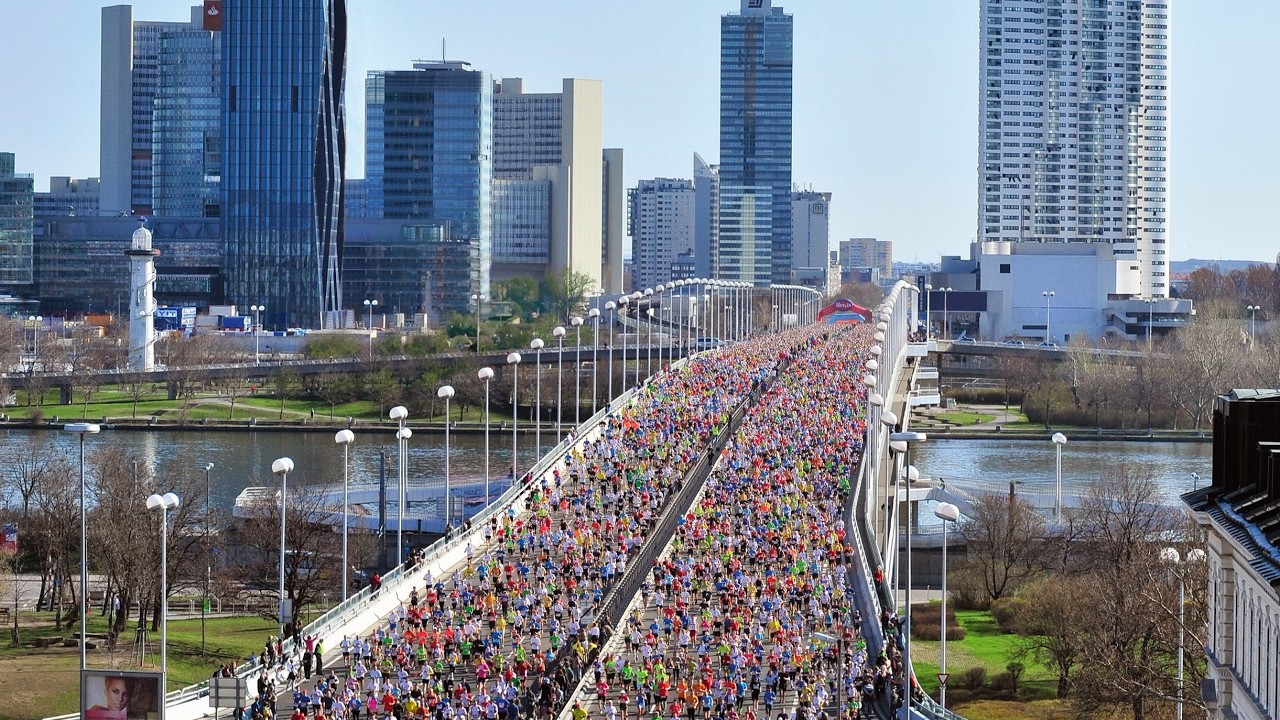
The winner of the Vienna City Marathon has been disqualified for wearing shoes that do not fit the race rules. Derara Hurisa ran the race in two hours, nine minutes and 22 seconds, but was stripped of his title when it was discovered the soles of his shoes is 5cm thick. It is one centimetre thicker than allowed in the race.
“Winner disqualified: The initial winner of the Vienna City Marathon had to be disqualified for wearing shoes which are not compliant with the rules. Ethiopia’s Derara Hurisa crossed the finish line first after 2.09:22,” the race Twitter account said.
“The sole of road running shoes has to be no thicker than four centimetres. Hurisa was running with a model that has a sole thickness of five centimetres.”
“Kenya’s Leonard Langat is now the winner of the Vienna City Marathon with a time of 2.09:25,” the account posted.
Hurisa, 24, made a name for himself last year by setting the Mumbai Marathon record, in 2.08:08.
Running shoes have been the centre of debate in the athletics world. Nike were the first to add a carbon plate into their sole, which in theory helped spring athletes forward. Fans and commentators alike wondered if getting an additional boost from shoes is within the ethos of running, where it is a test of fitness and not technology.
Since Nike’s invention, other brands have followed suit. Many records, including Eliud Kipchoge’s sub-two hour marathon, which was run in Vienna, have been set in carbon plated shoes.
The so called “technology doping” prompted the Olympics to set out guidelines for shoes allowed. In January 2020, the Olympics announced shoes with more than one carbon plate were banned, and so were soles thicker than 4cm.
live stream of event
https://live.s3.ap-south-1.amazonaws.com/vienna-city-marathon.html
Login to leave a comment
Vienna City Marathon
More than 41,000 runners from over 110 nations take part in the Vienna City Marathon, cheered on by hundreds of thousands of spectators. From the start at UN City to the magnificent finish on the Heldenplatz, the excitement will never miss a beat. In recent years the Vienna City Marathon has succeeded in creating a unique position as a marathon...
more...Ethiopian Derara Hurisa breaks the Tata Mumbai Marathon record in borrowed shoes
Ethiopians Brihanu Testome, Ayele Abshero and Derara Hurisa chatted among themselves as they strode along the Tata Mumbai Marathon route, before Hurisa took charge to finish in two hours, eight minutes, nine seconds — under the course record 2:08:35 (Gideon Kipketer, 2016).
Hurisa earned $45,000 first prize, plus a $15,000 bonus for the record. He also dragged Ayele (2:08:20) and Testome (2:08:26) under the course mark. The first seven runners in men’s elite category finished under 2:10min in this IAAF Gold Label event, run along a slightly revised course, in cooler January weather and pushed by pacemakers for a major part of the race.
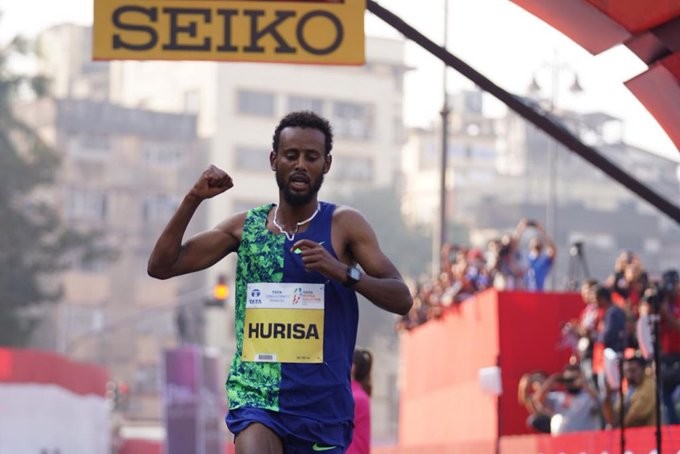
The women’s winner, Ethiopian Amane Beriso (2:24:51s) did not get on top of the conditions and struggled in the last phase. But, with the nearest challenger far behind, she held on to breast the tape first, but missed the course record of 2:24:33s (Valentine Kipkieter, 2014). She will also be richer by $45,000.
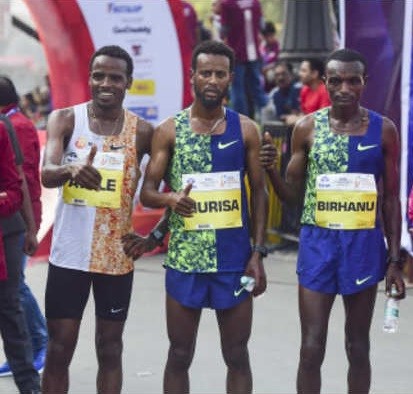
Long-limbed pace-setter Sylvester Kipketer loped ahead of Amane from start to finish, even alerted the Ethiopian to forget fatigue and put in a burst to the tape as the course record was within grasp till the end. Rodah Jepkorir finished in 2:27:14 for the silver while Haven Hailu bagged the bronze in 2:28:56.
The men’s race turned into an engrossing tussle, seven remaining in the lead pack after the pace-setters had exited. Defending champion Cosmas Lagat from Kenya also faded away, supposedly due to injury. Ayele remained the name to watch (personal best 2:04:23). “My body felt good at the 30km mark and thoughts in my mind changed from finishing to running in record-breaking time.”
However, running in borrowed shoes, Hurisa stole the show with a stunning burst to leave his fellow countrymen behind. The champion is a cross-country runner with no marathon experience. “I knew Ayele is experienced over this distance and looked to him to show the way. I kept telling him to take charge of the race. Sensing that he was holding back, I decided to finish,” said Hurisa, a World junior athletics participant for Ethiopia in cross country.
His shoes were borrowed from Abraham Girma, a fellow elite runner. “I lost my regular shoes in flight,” said the champion. The TMM is organized by Procam International.
Login to leave a comment
Tata Mumbai Marathon
Distance running epitomizes the power of one’s dreams and the awareness of one’s abilities to realize those dreams. Unlike other competitive sports, it is an intensely personal experience. The Tata Mumbai Marathon is One of the World's Leading Marathons. The event boasts of fundraising platform which is managed by United Way Mumbai, the official philanthropy partner of the event. Over...
more...Moses Kibet and Katsiaryna Shaban Karneyenka were victorious at the Vidovdan Road Race
Login to leave a comment


